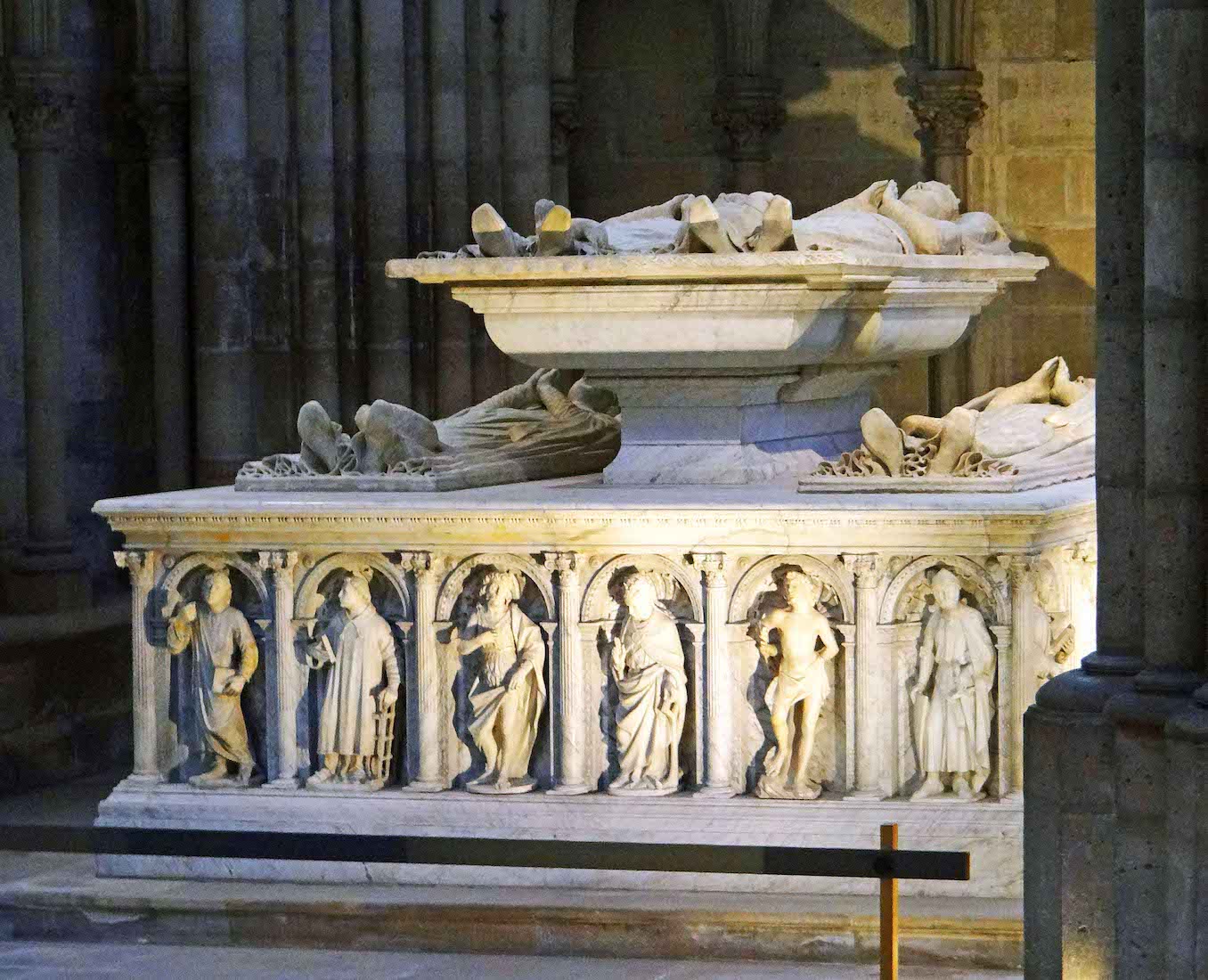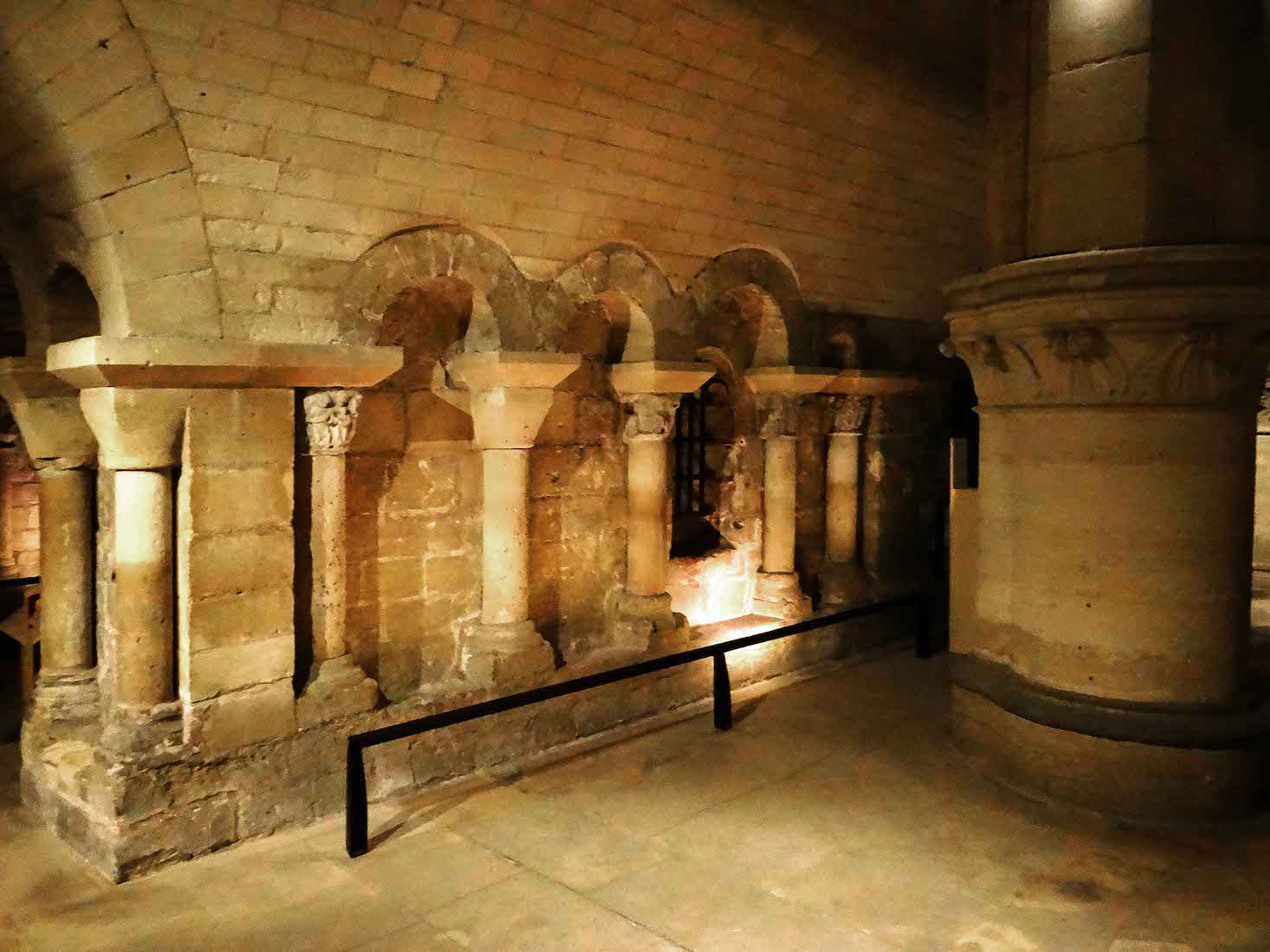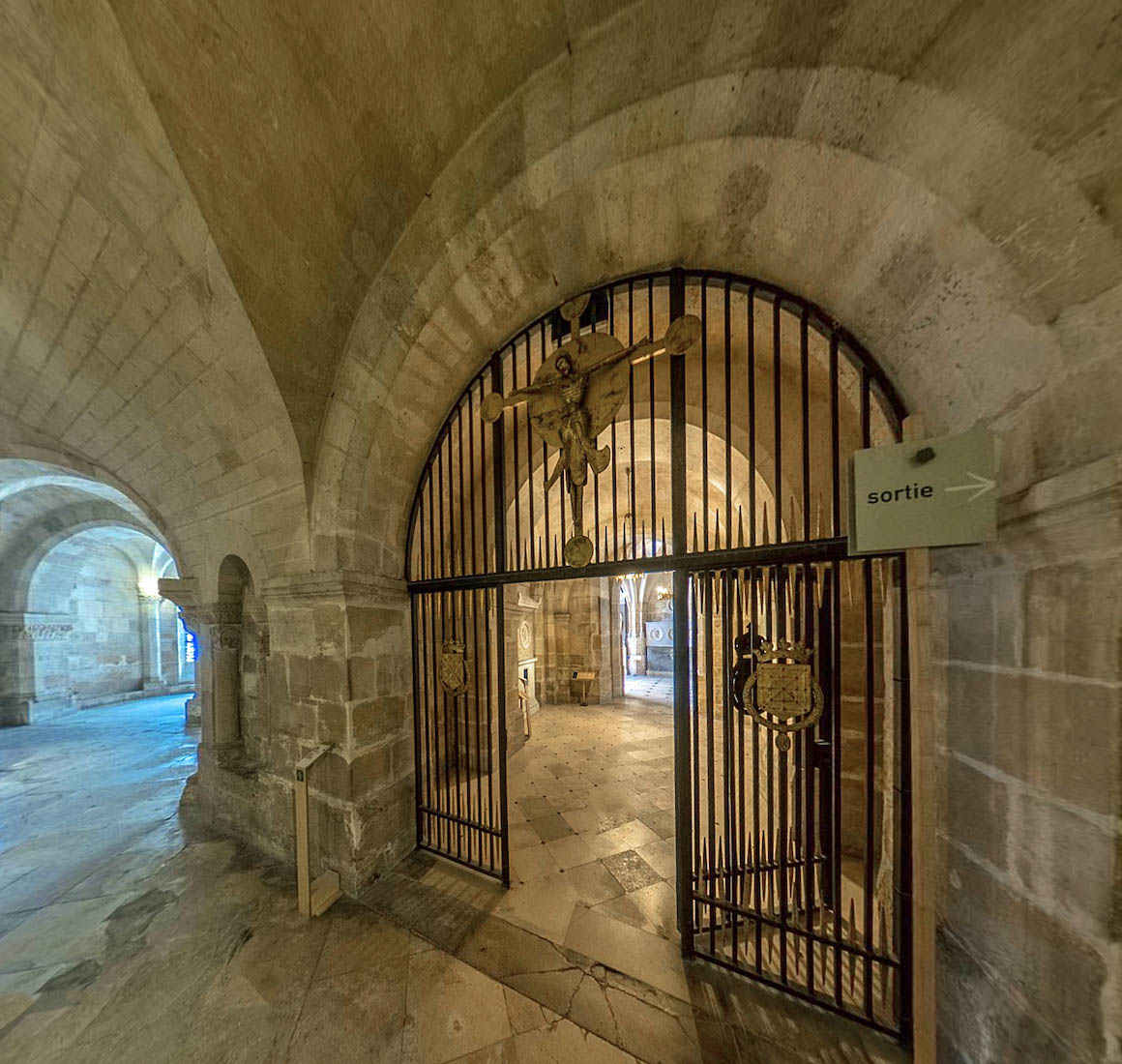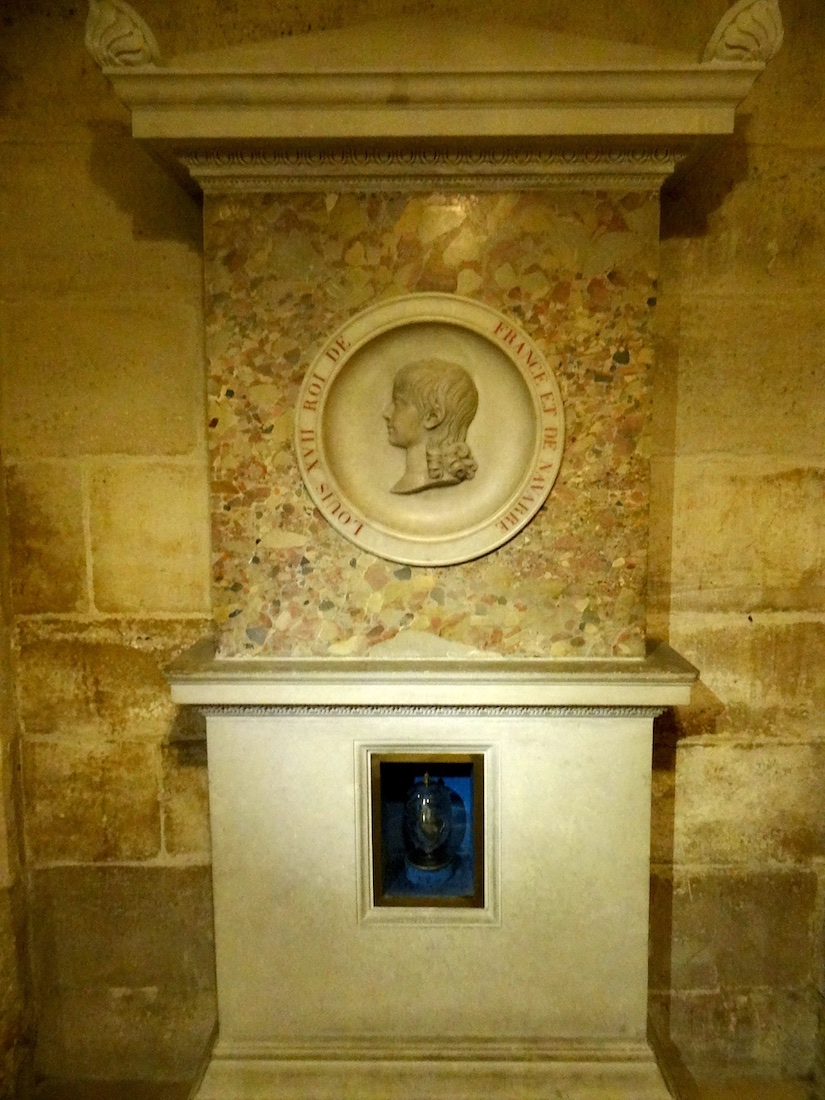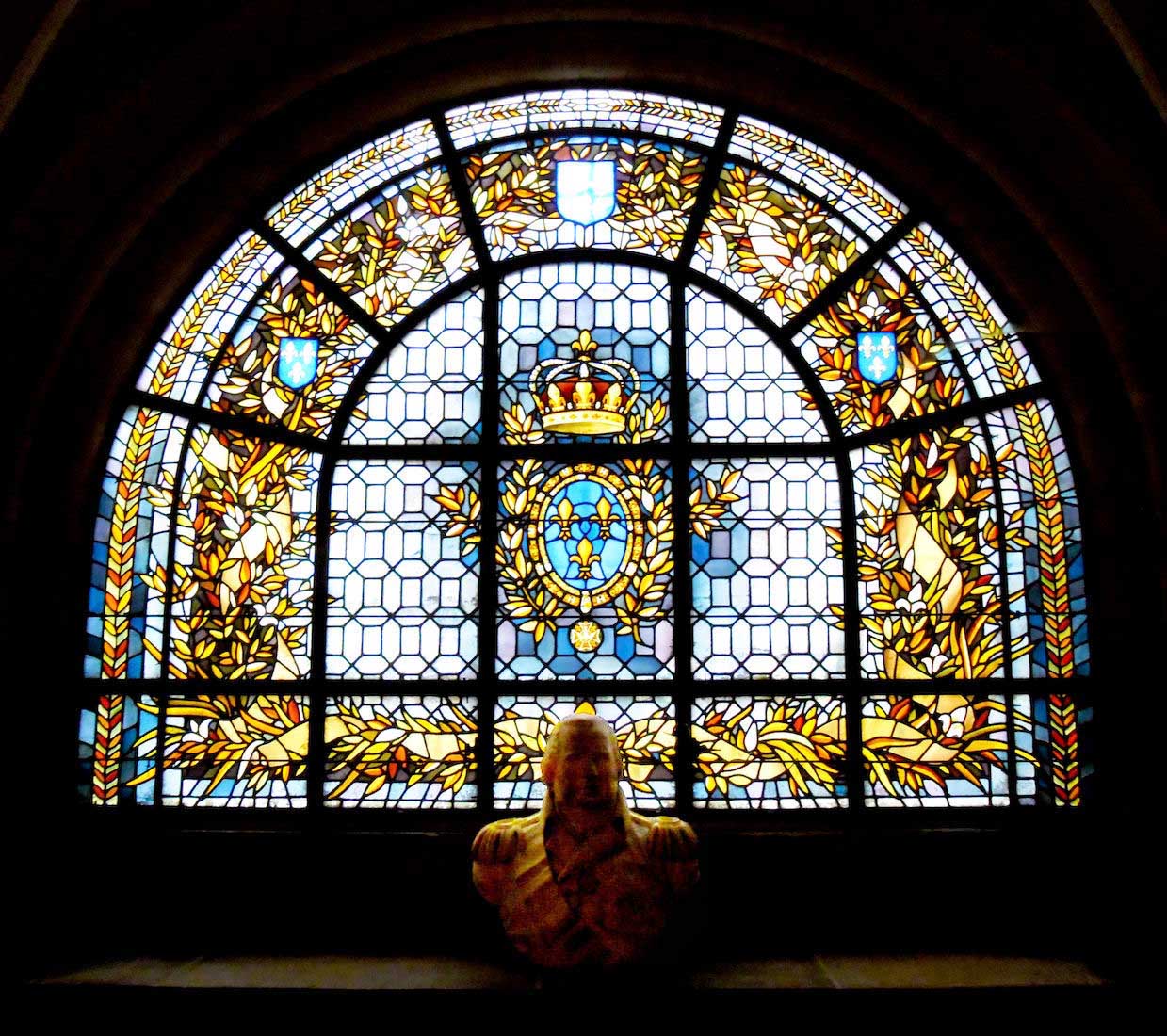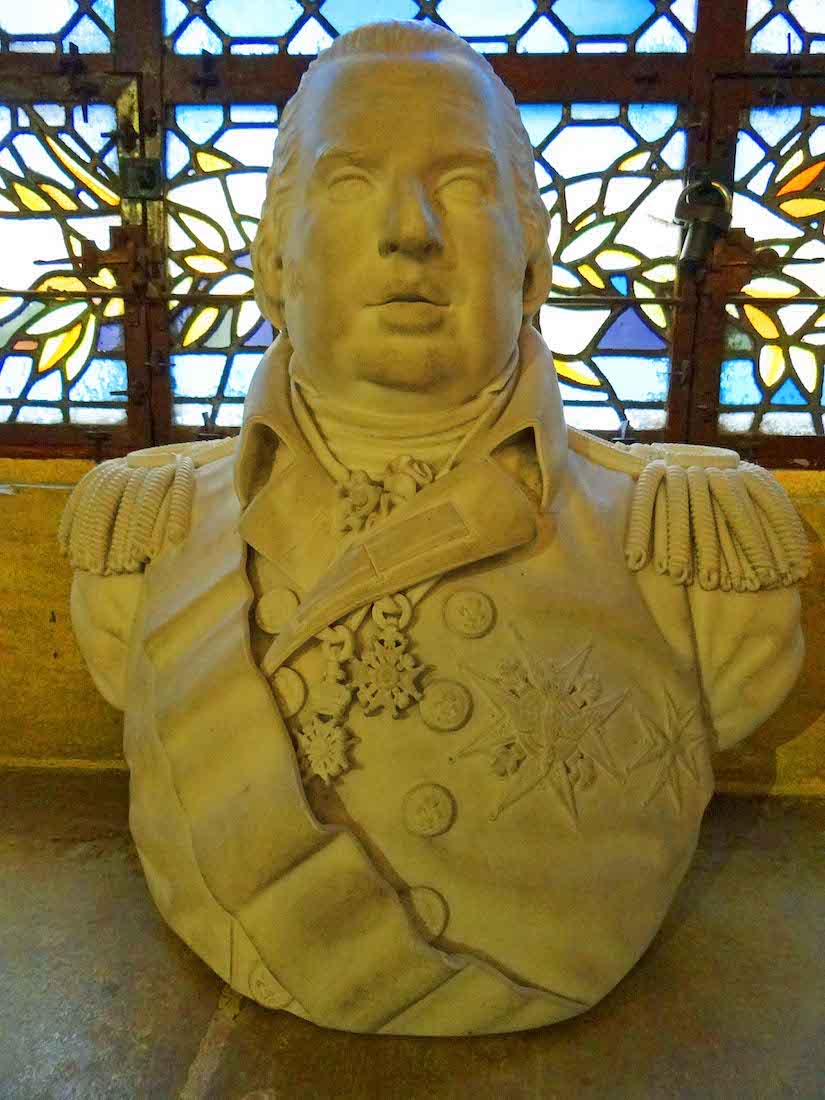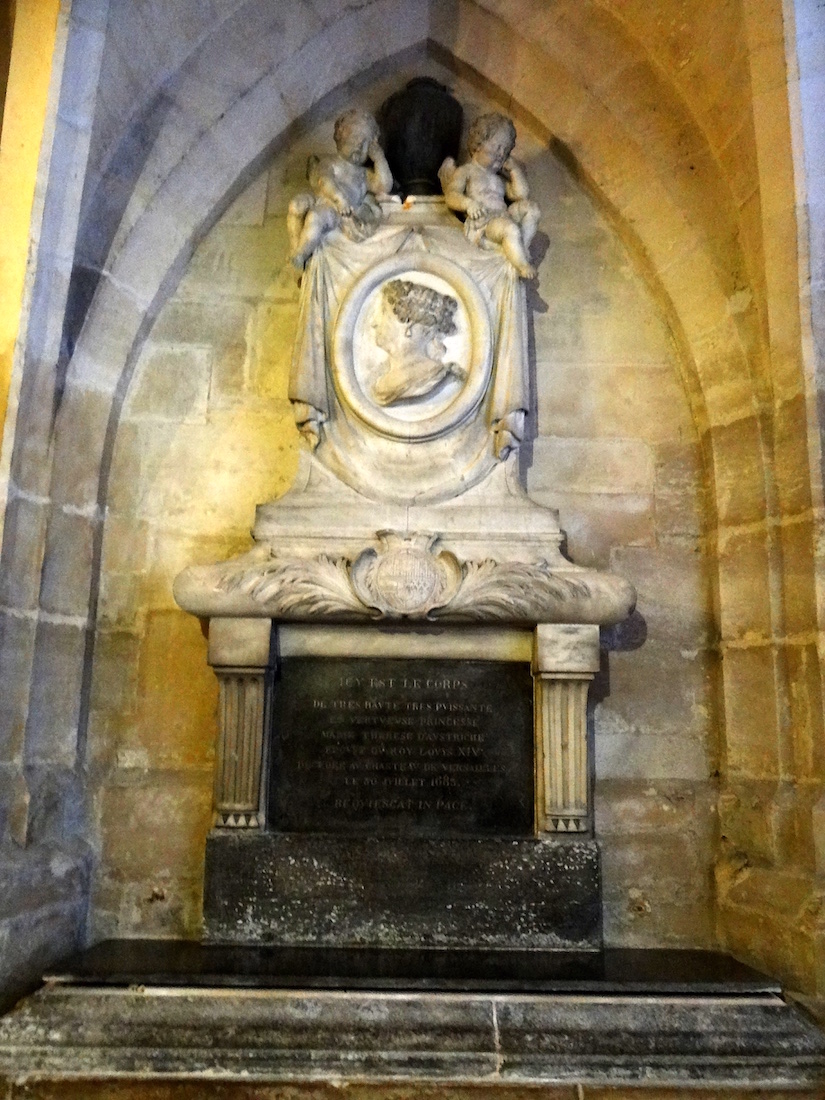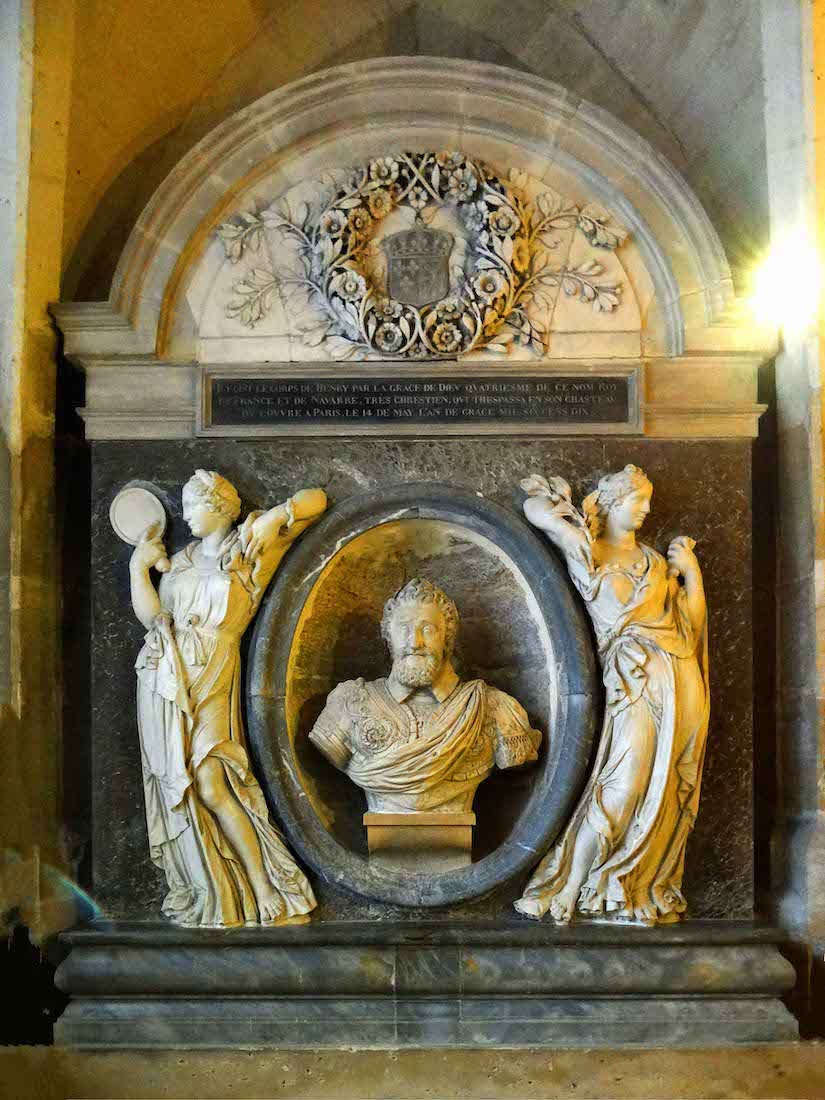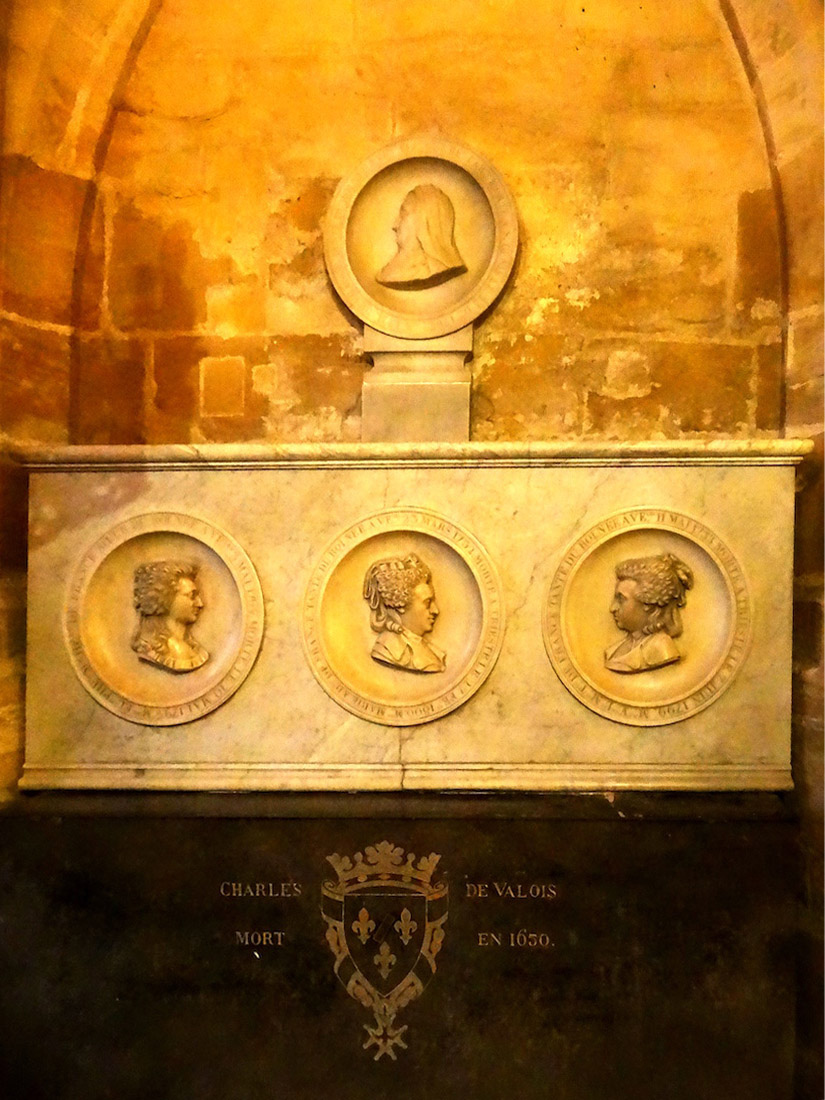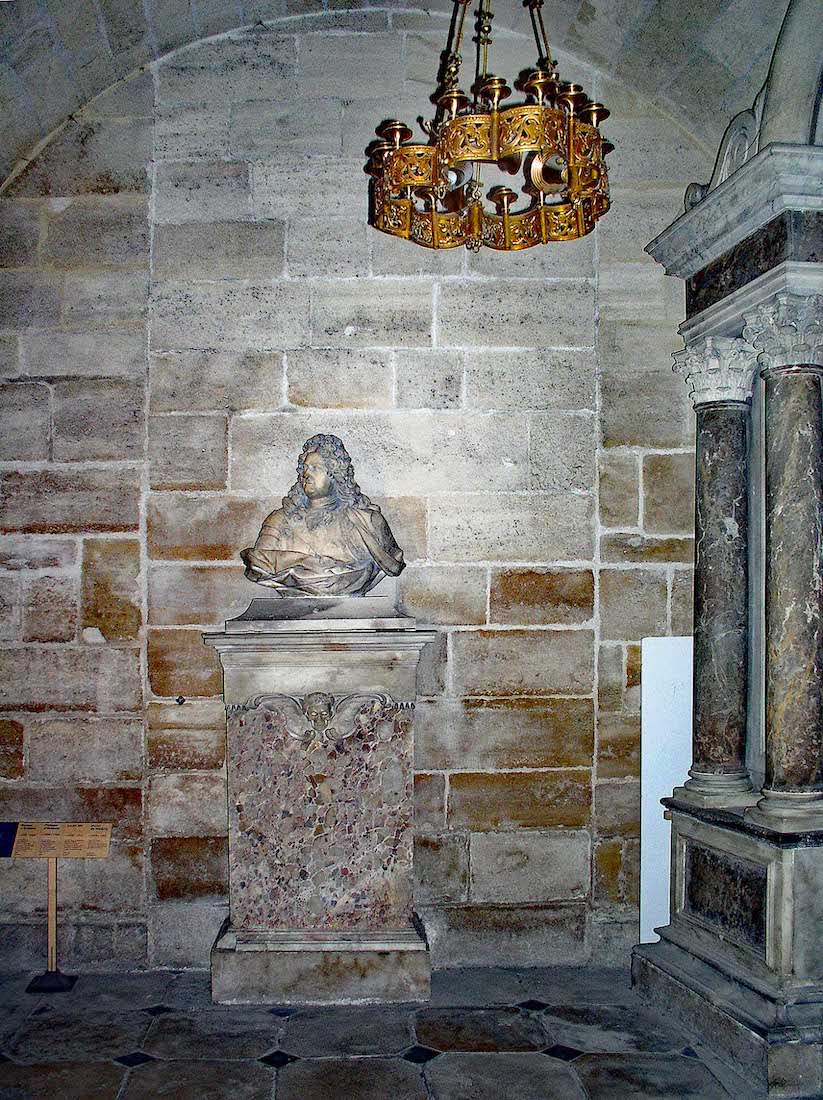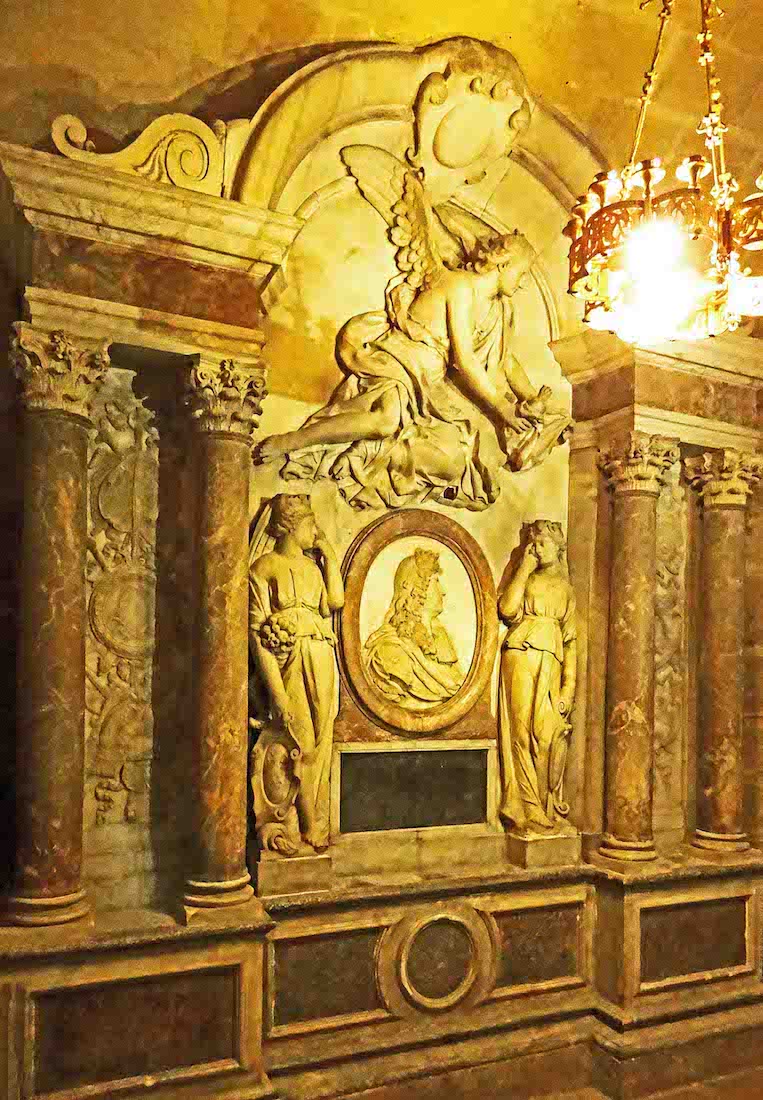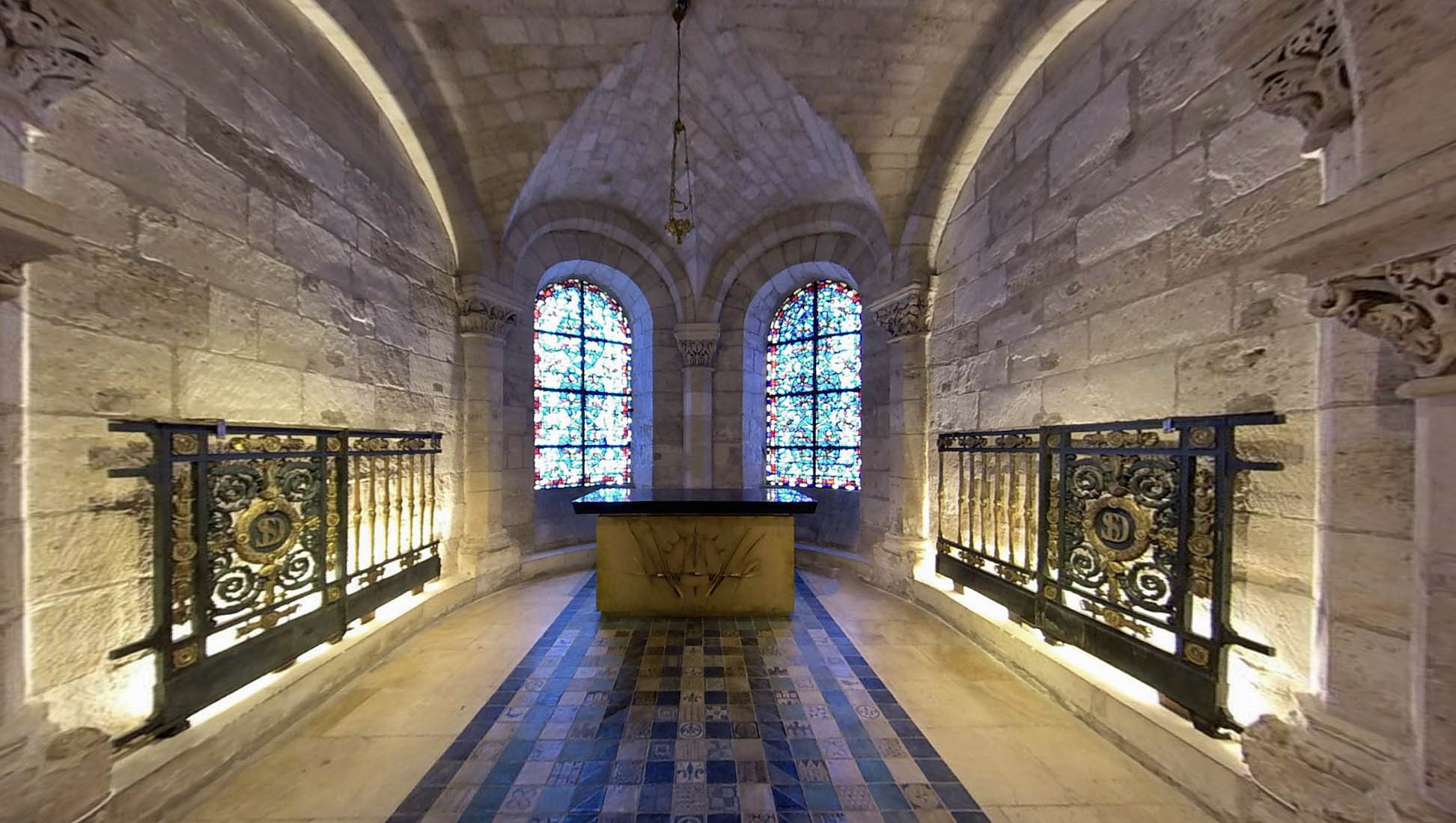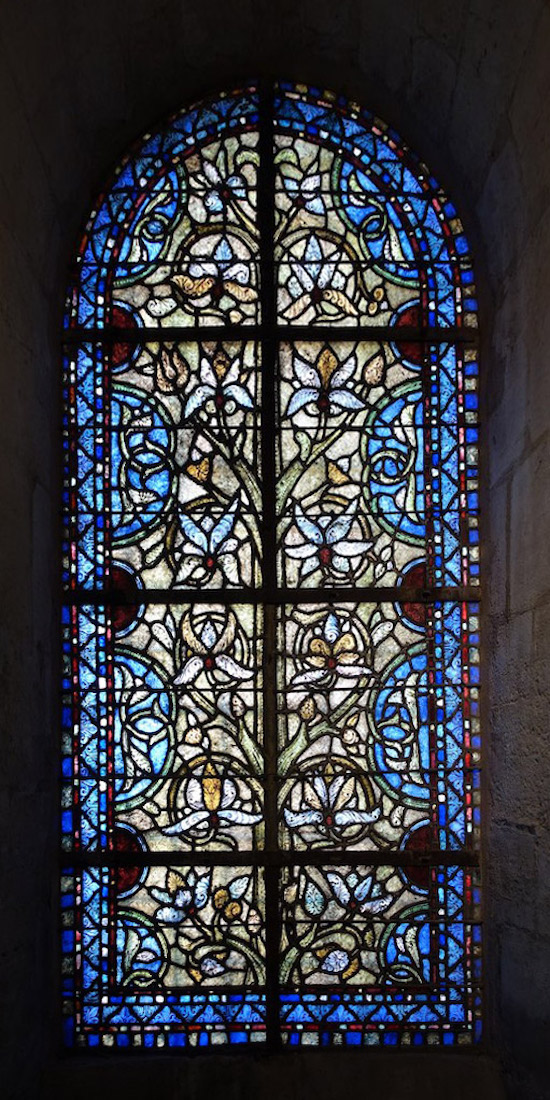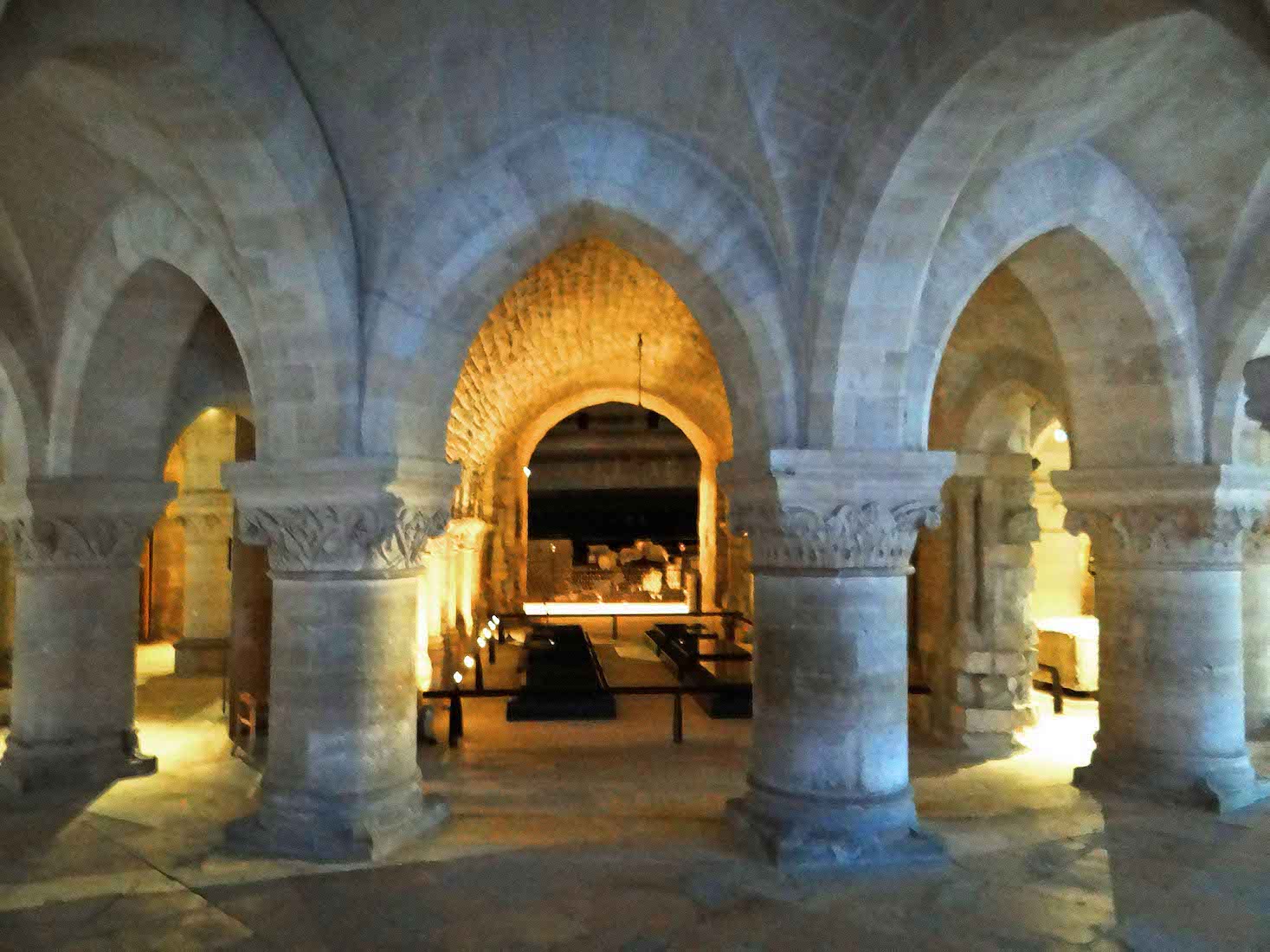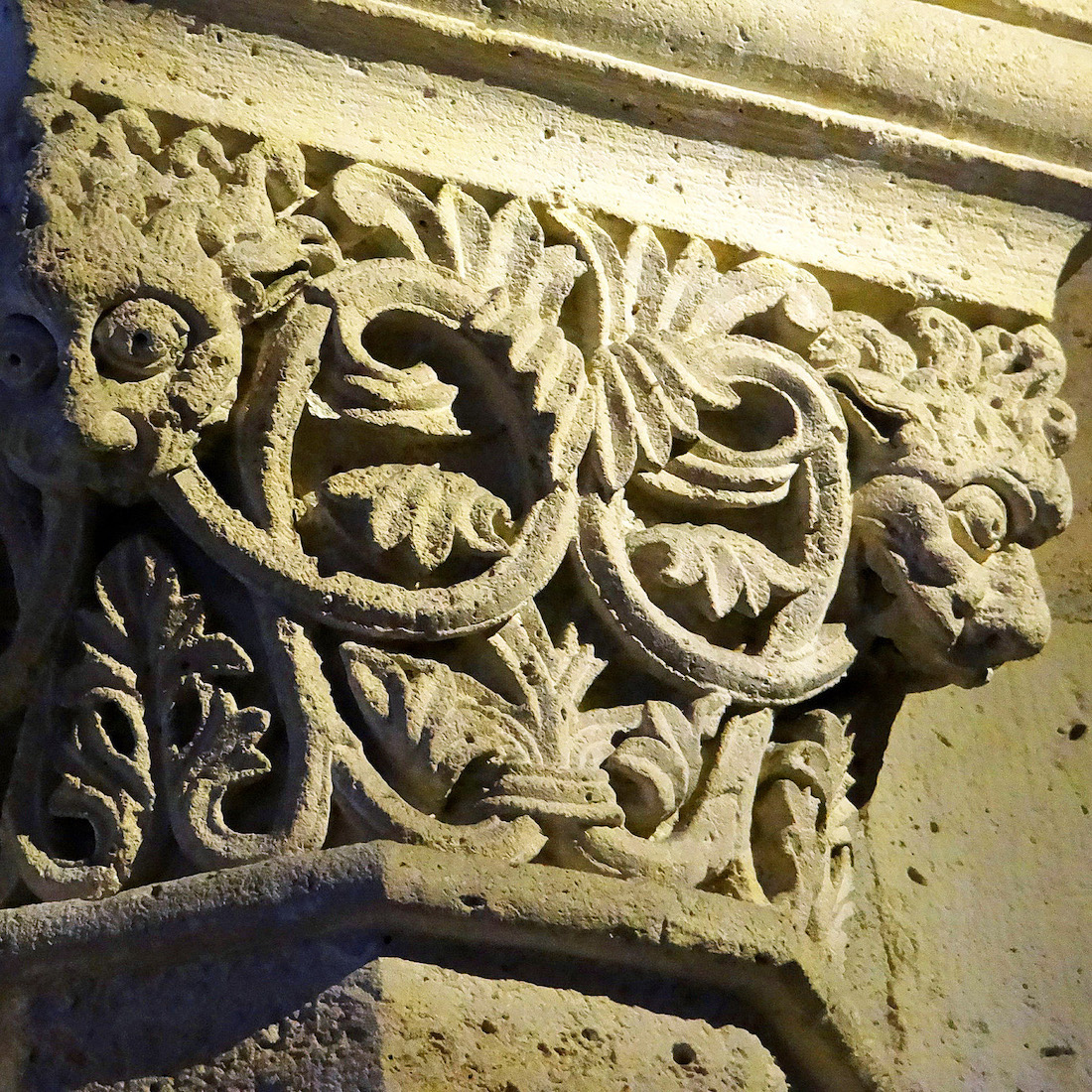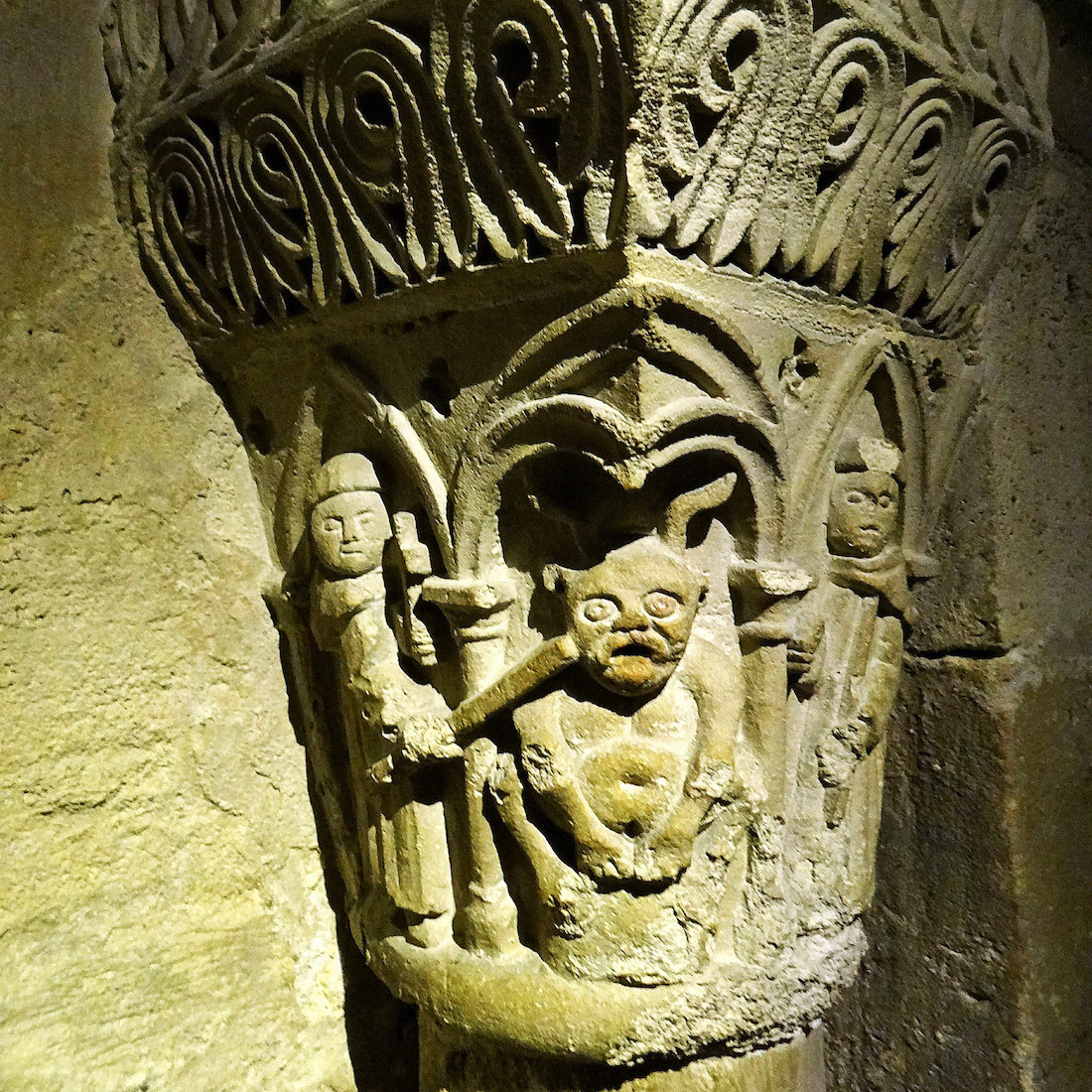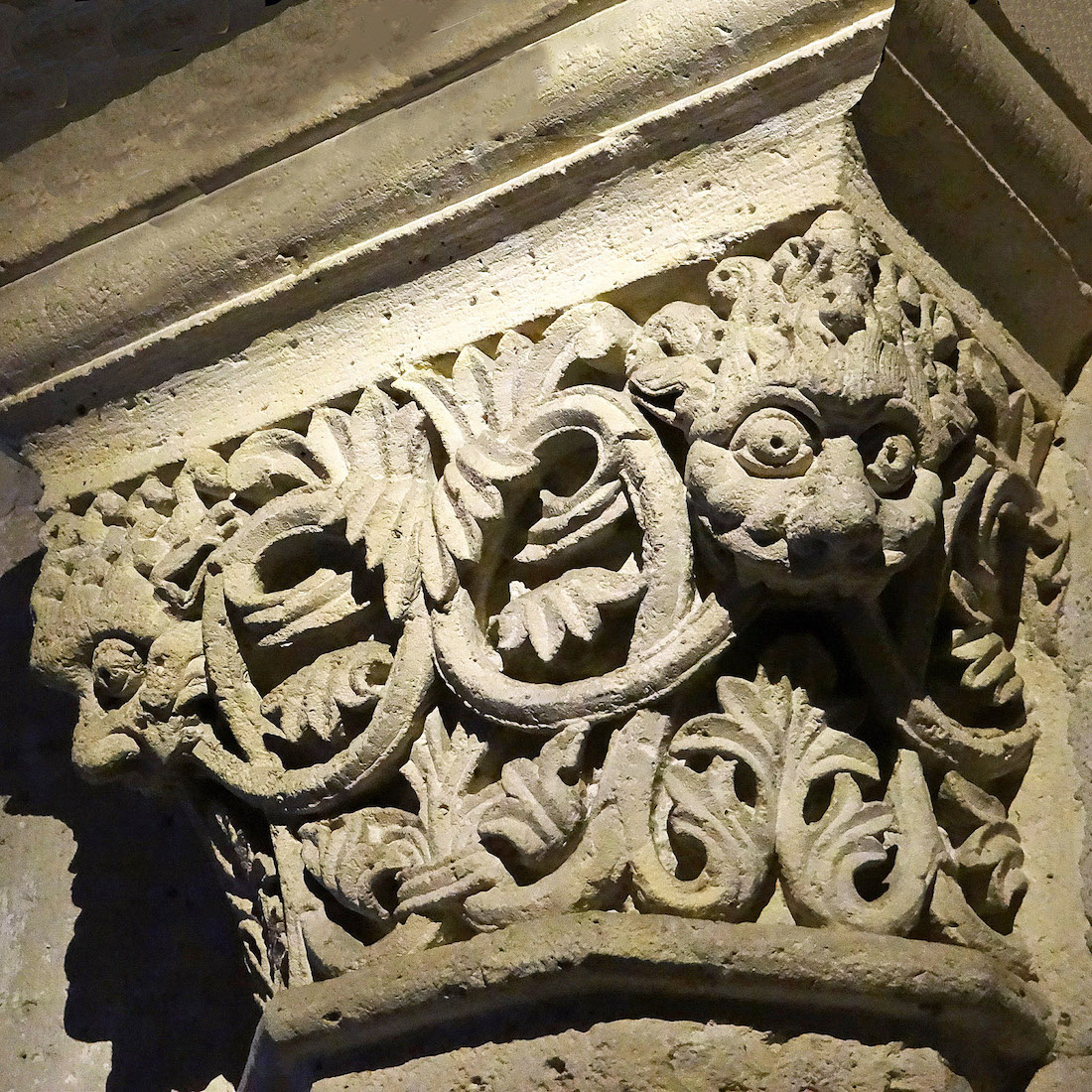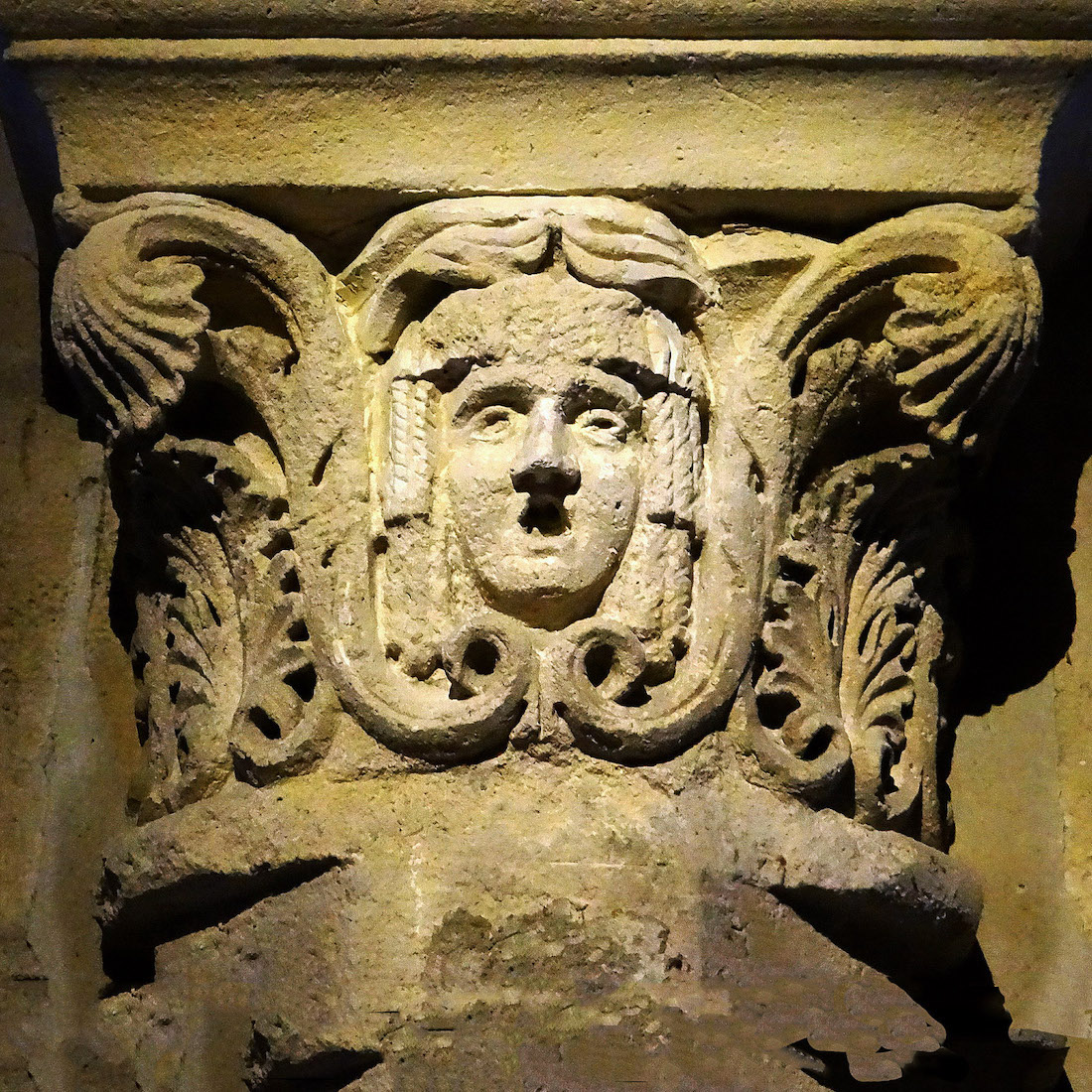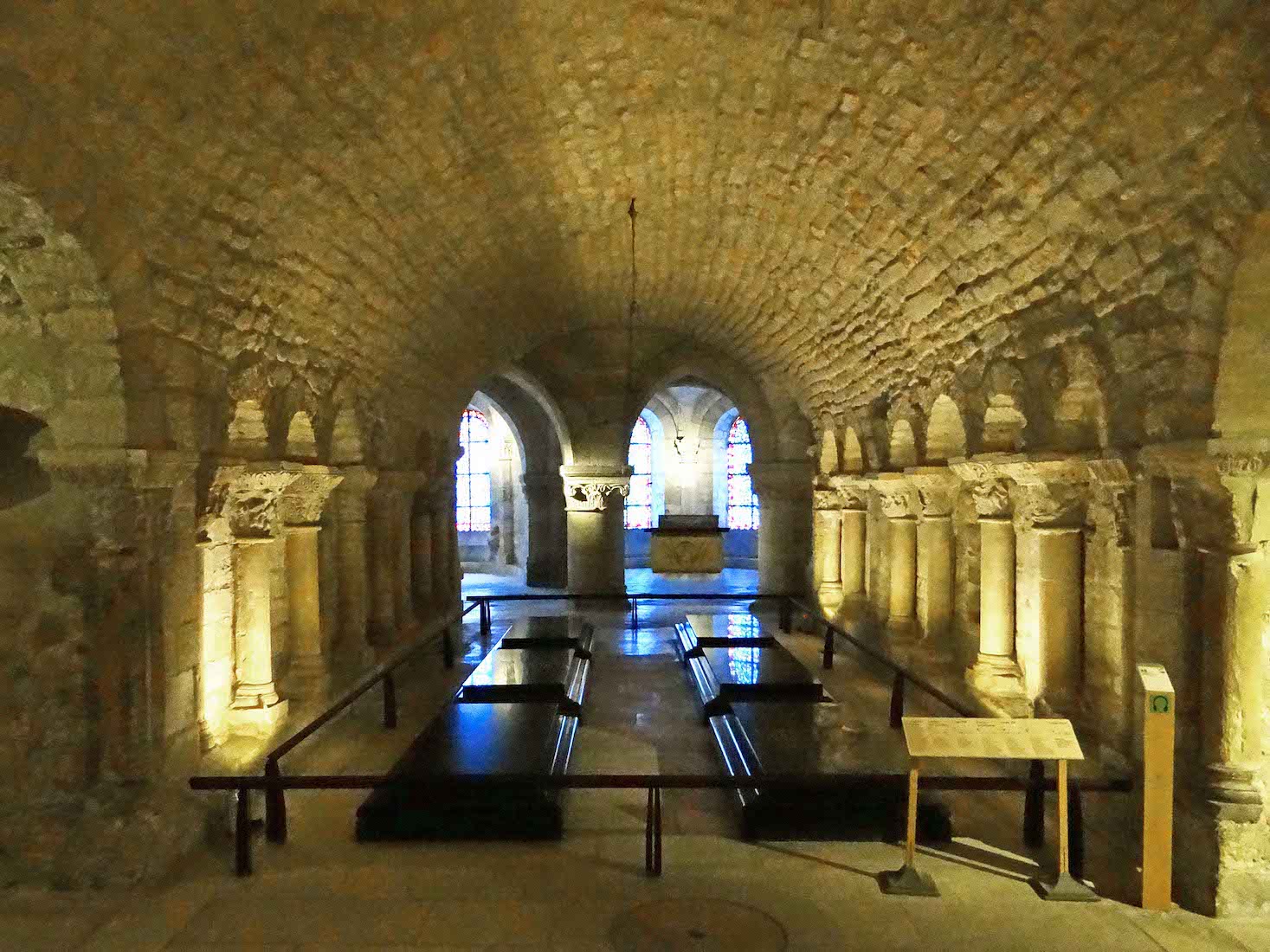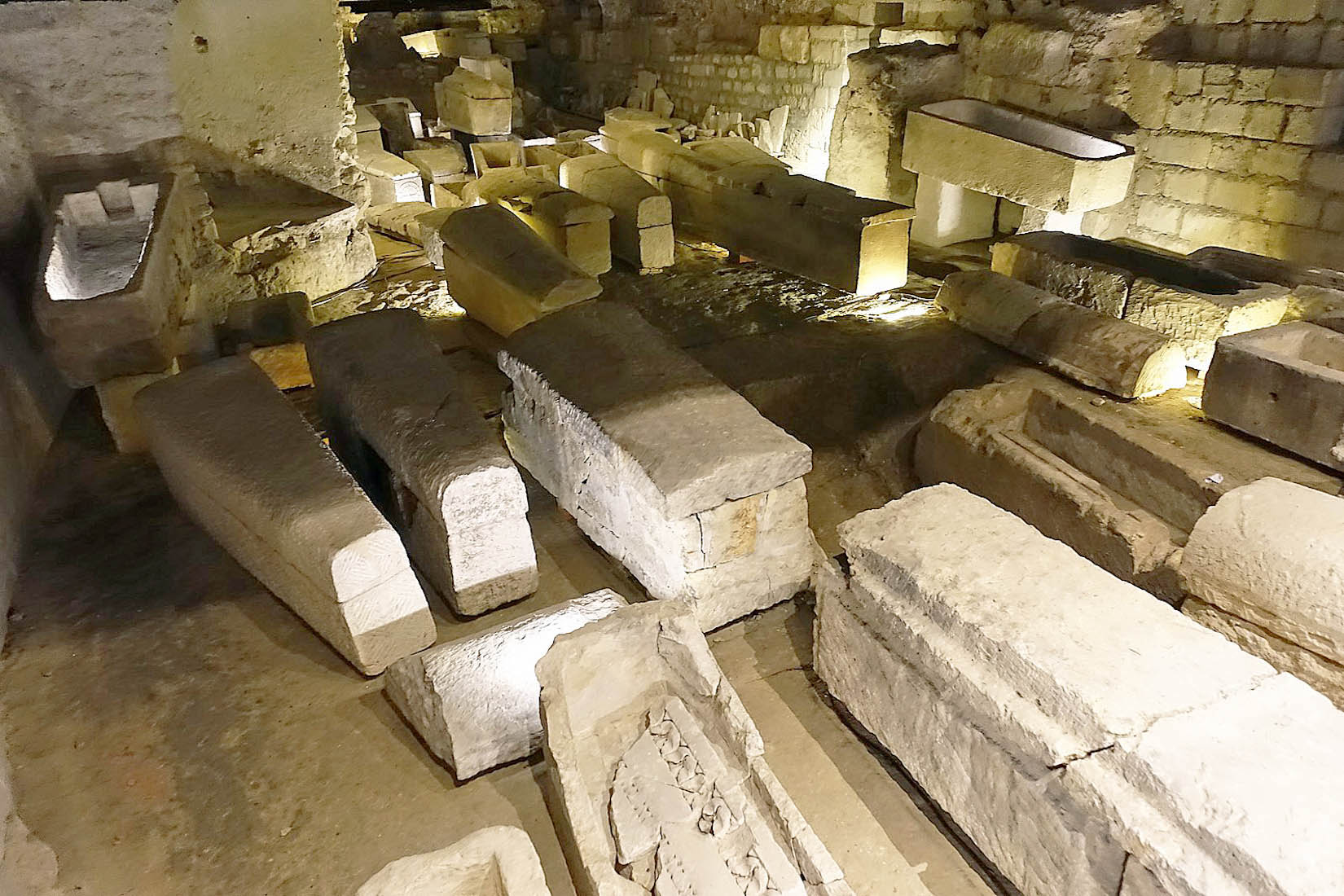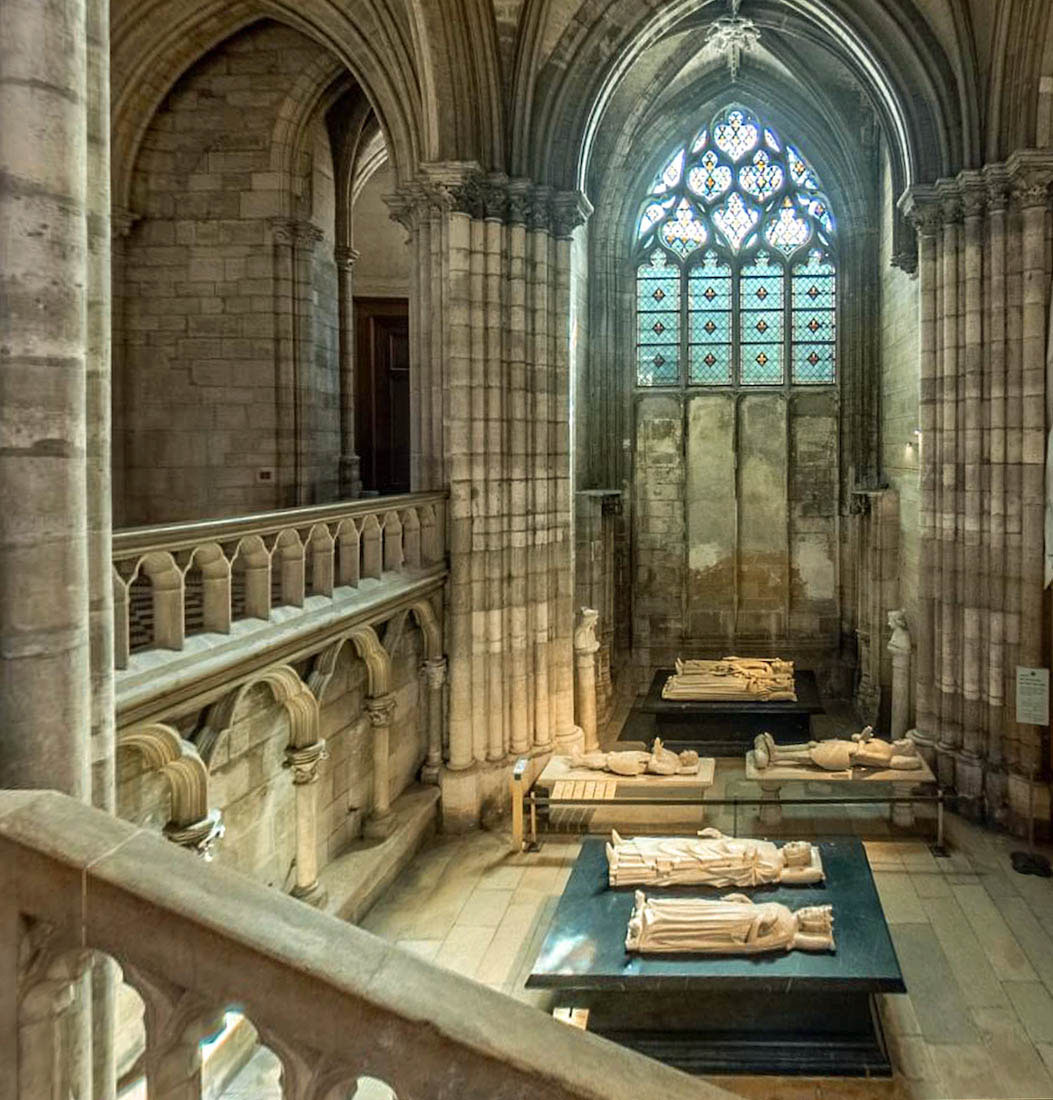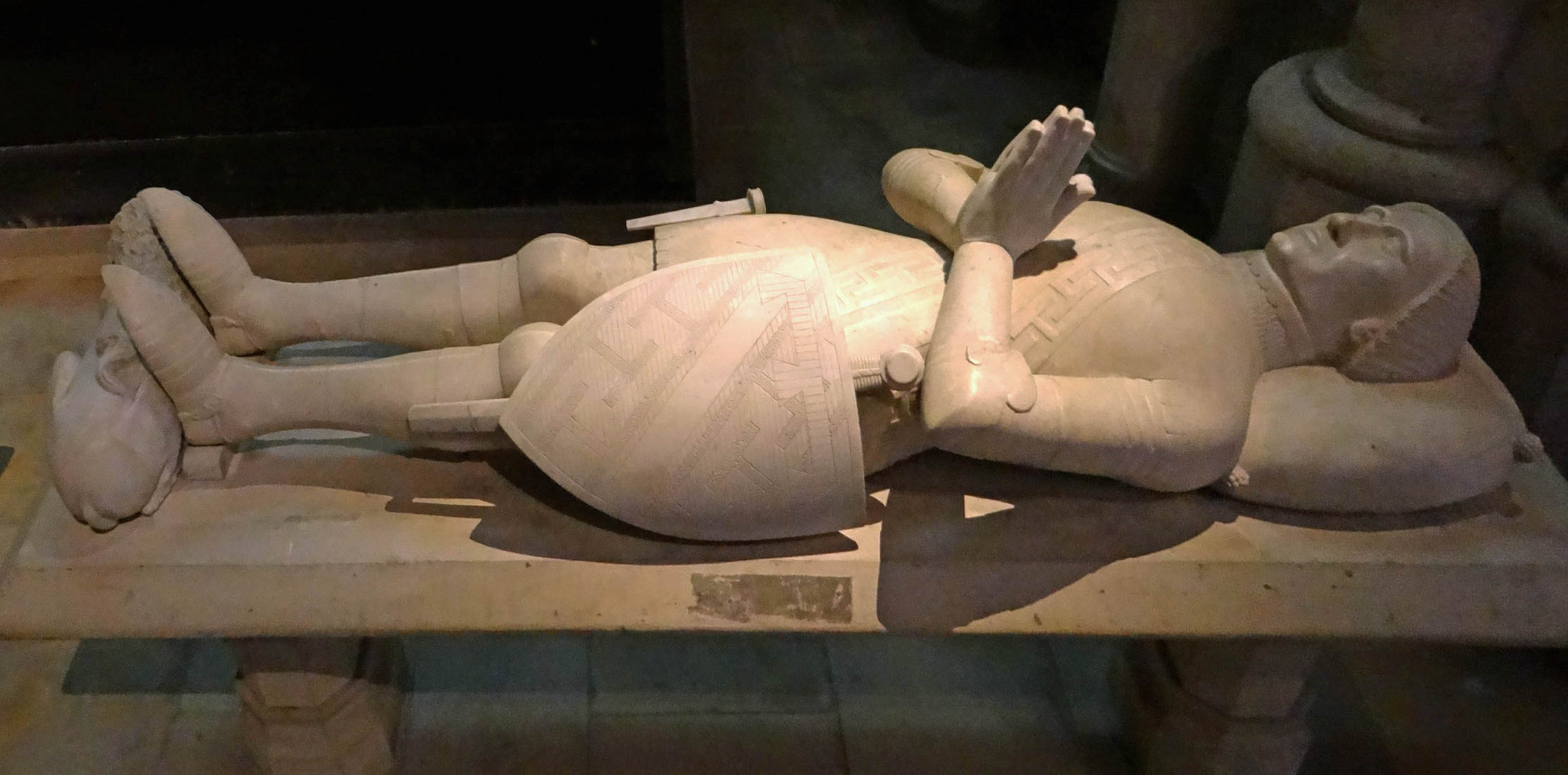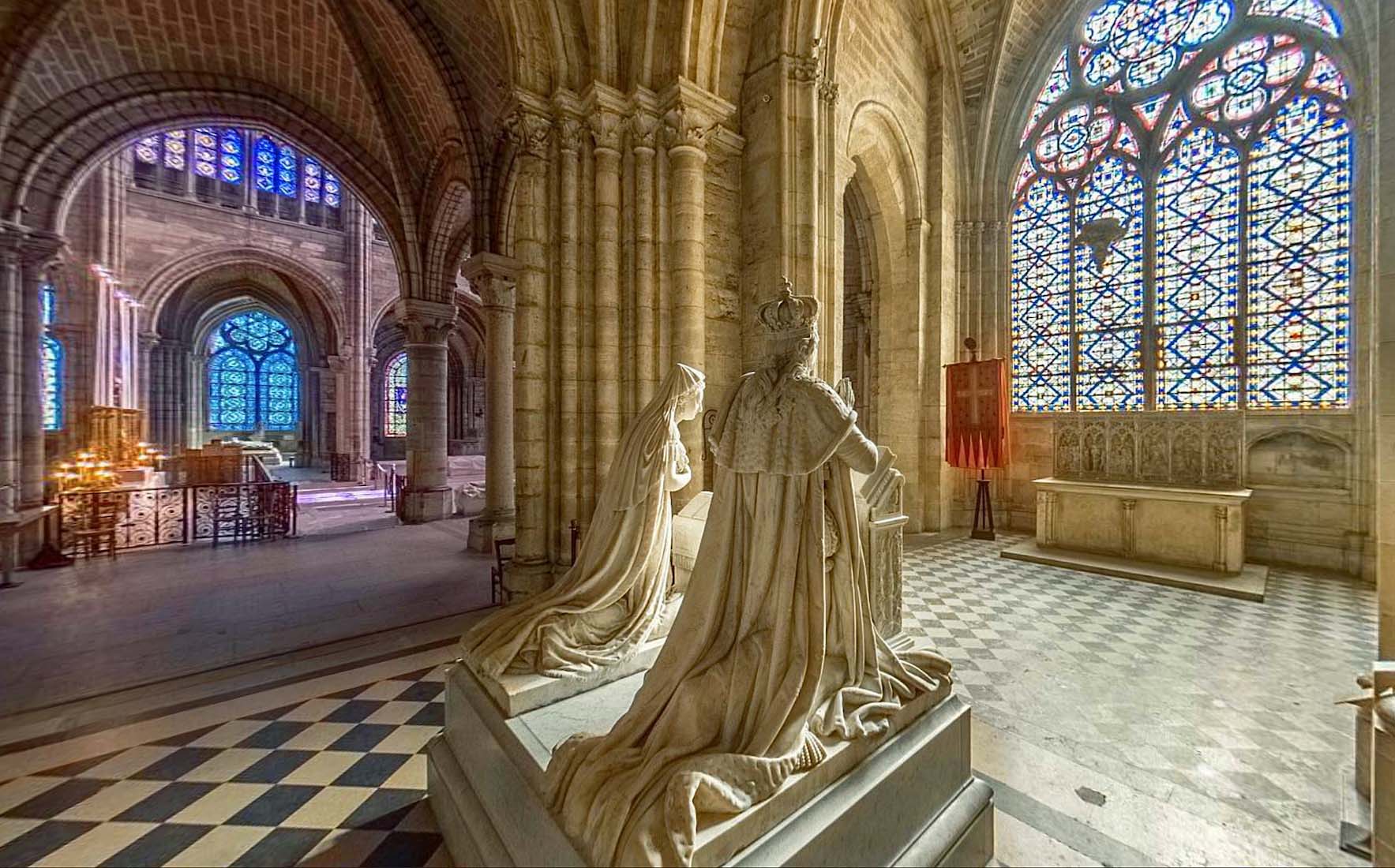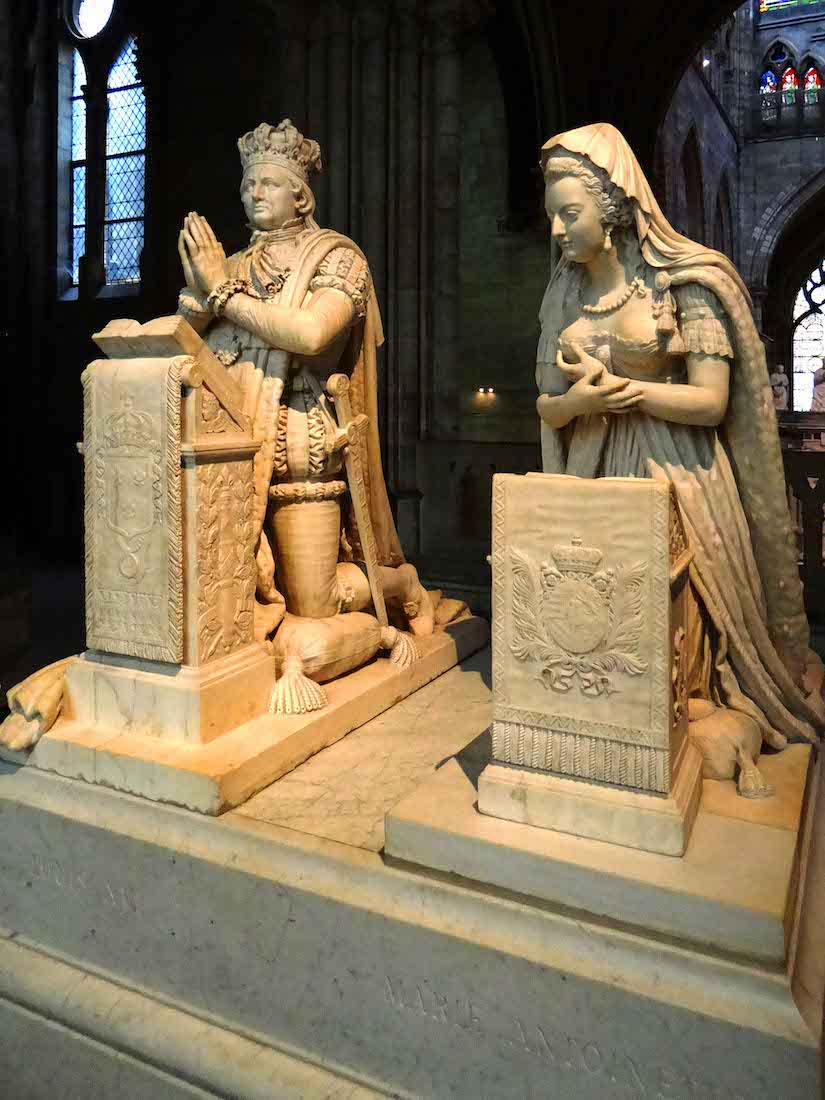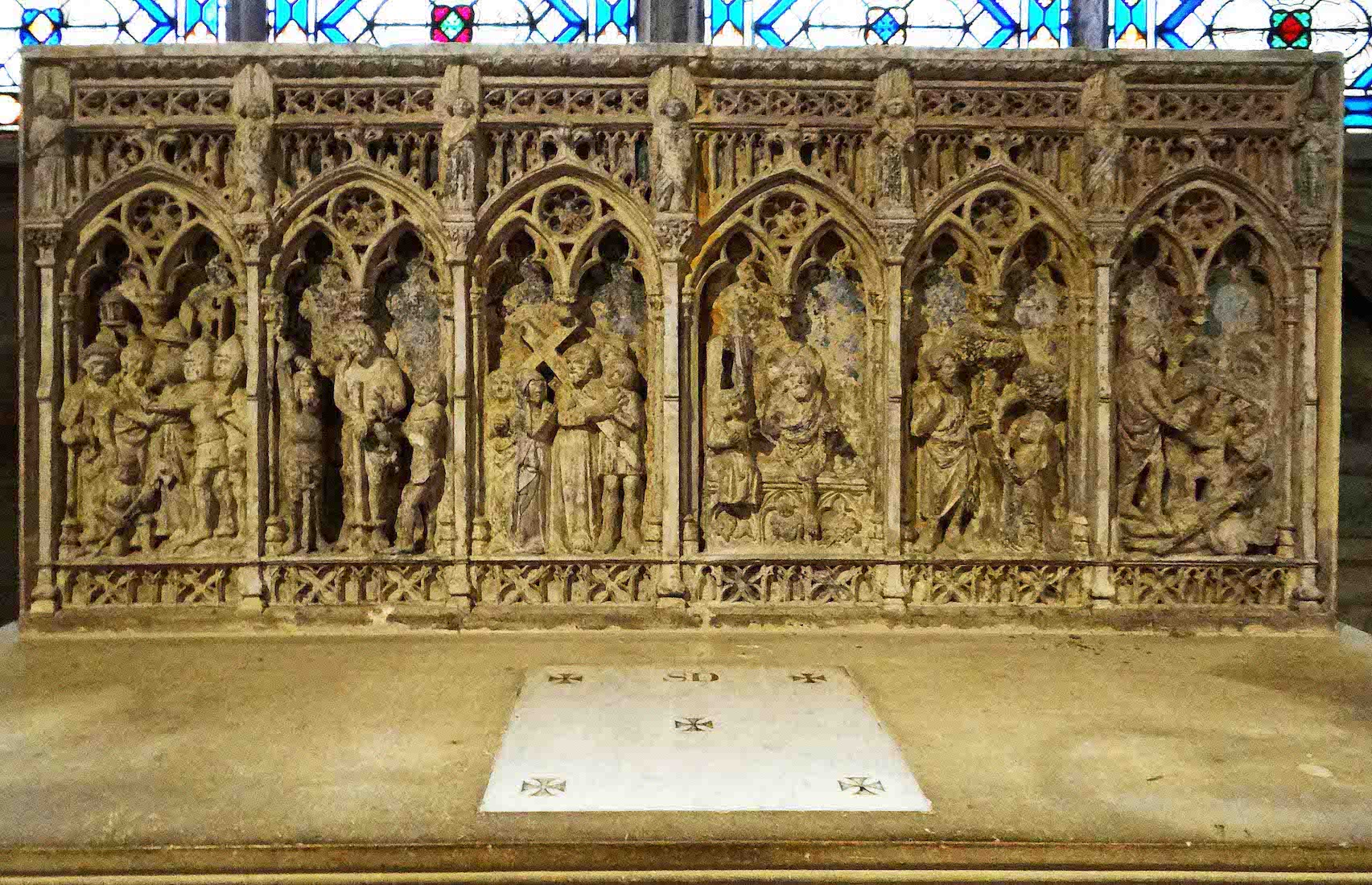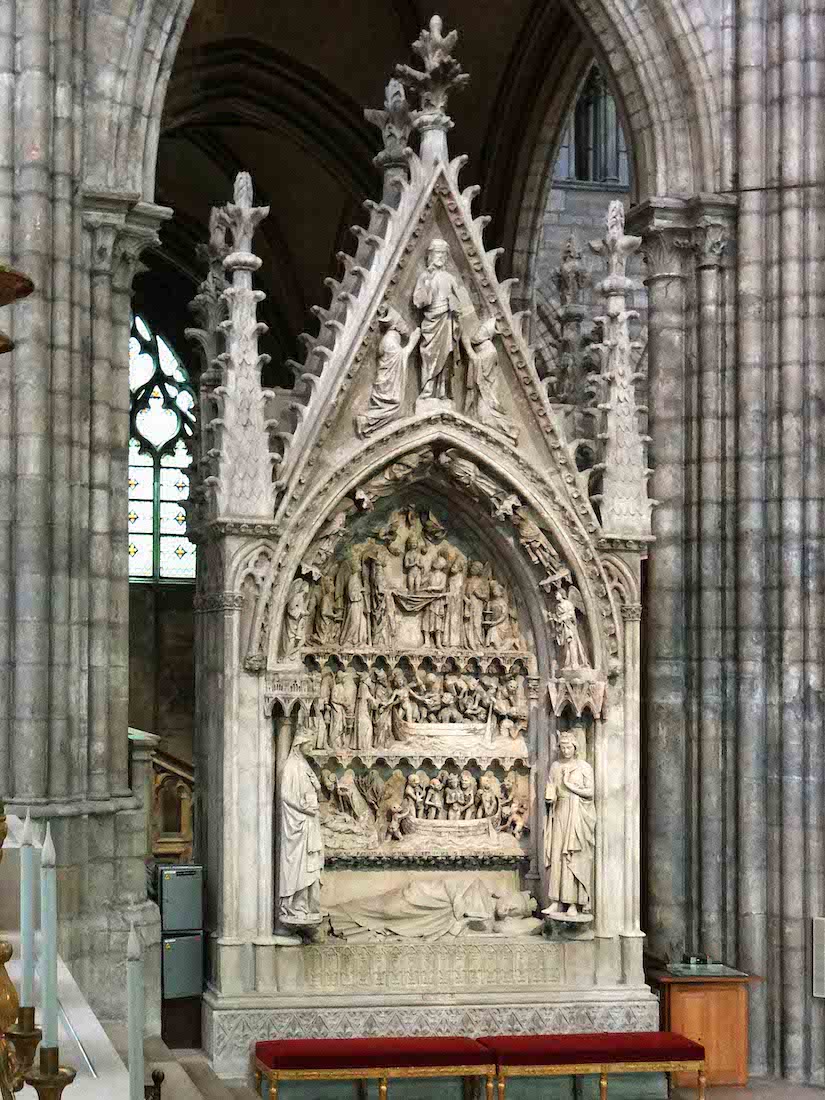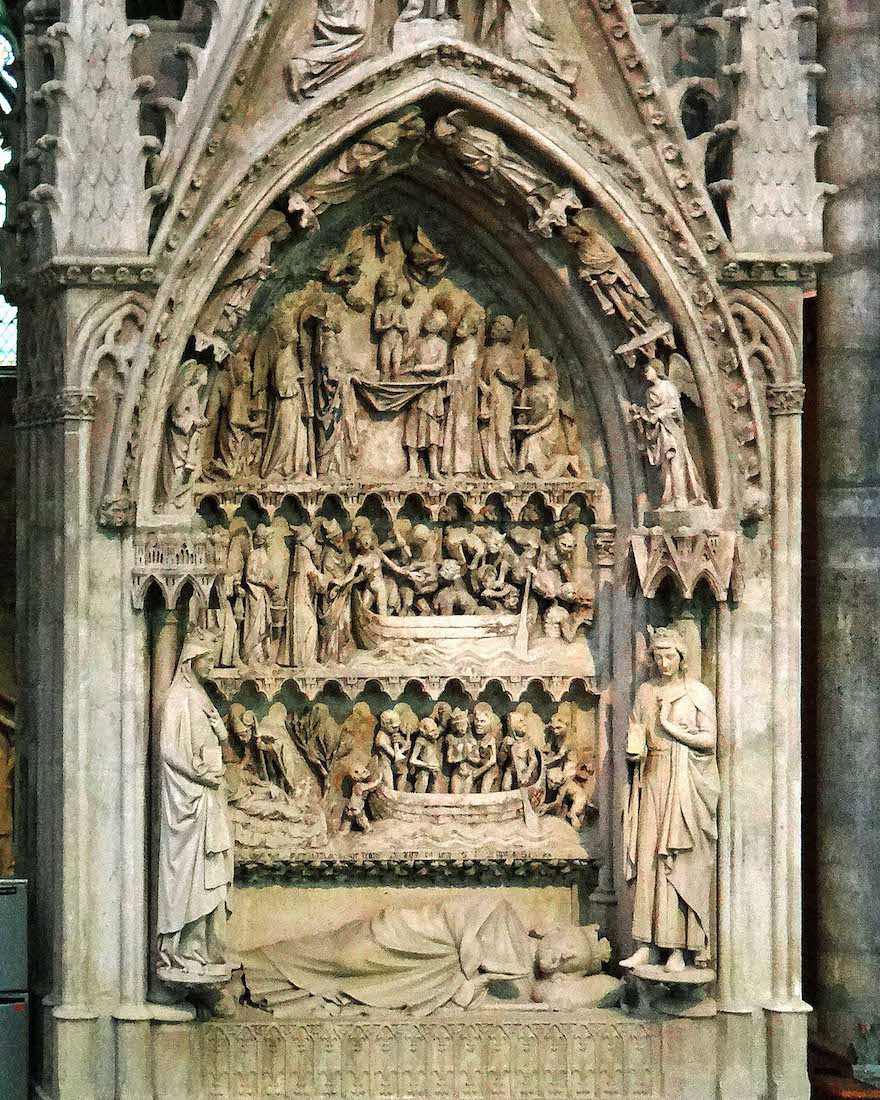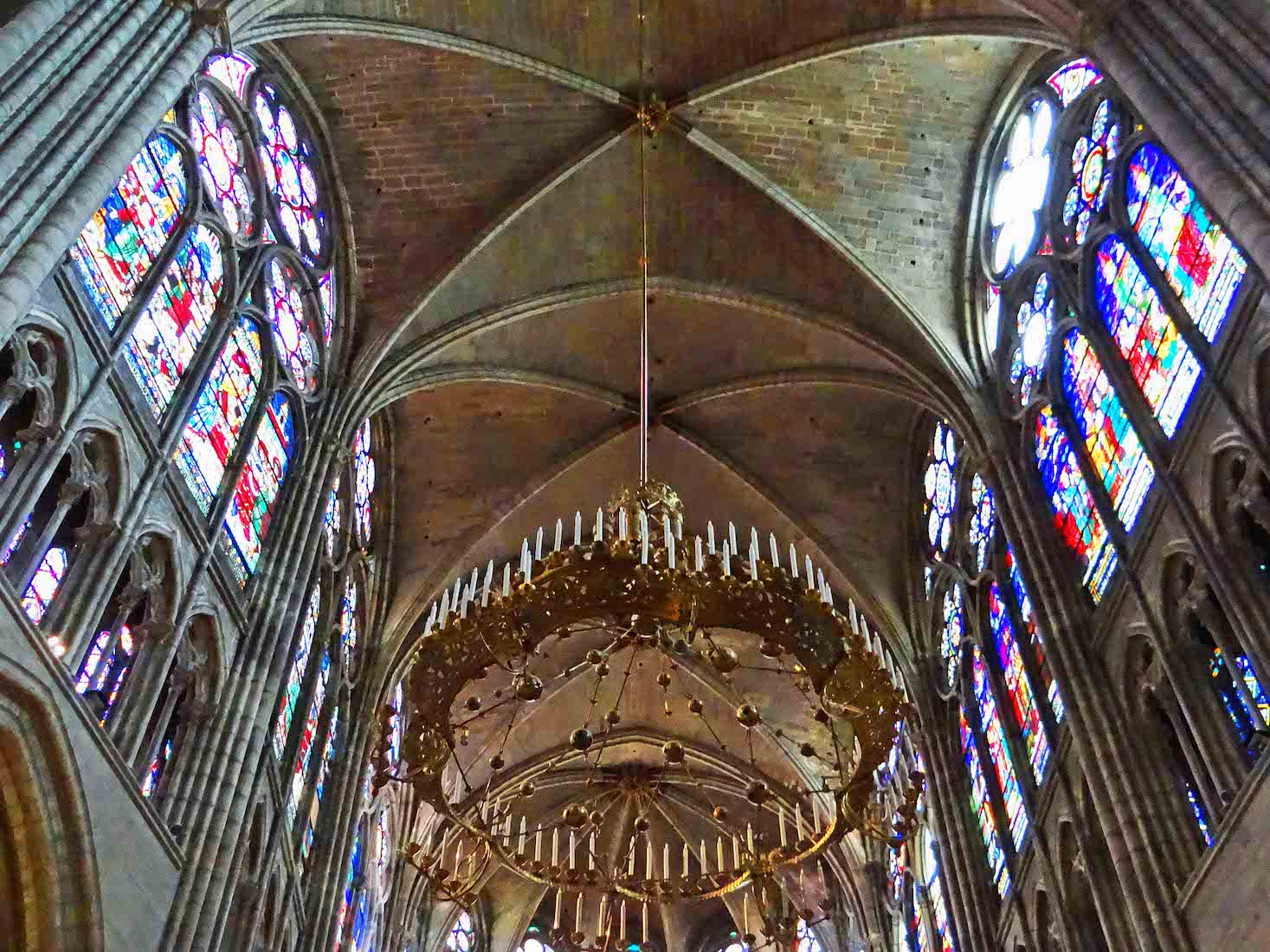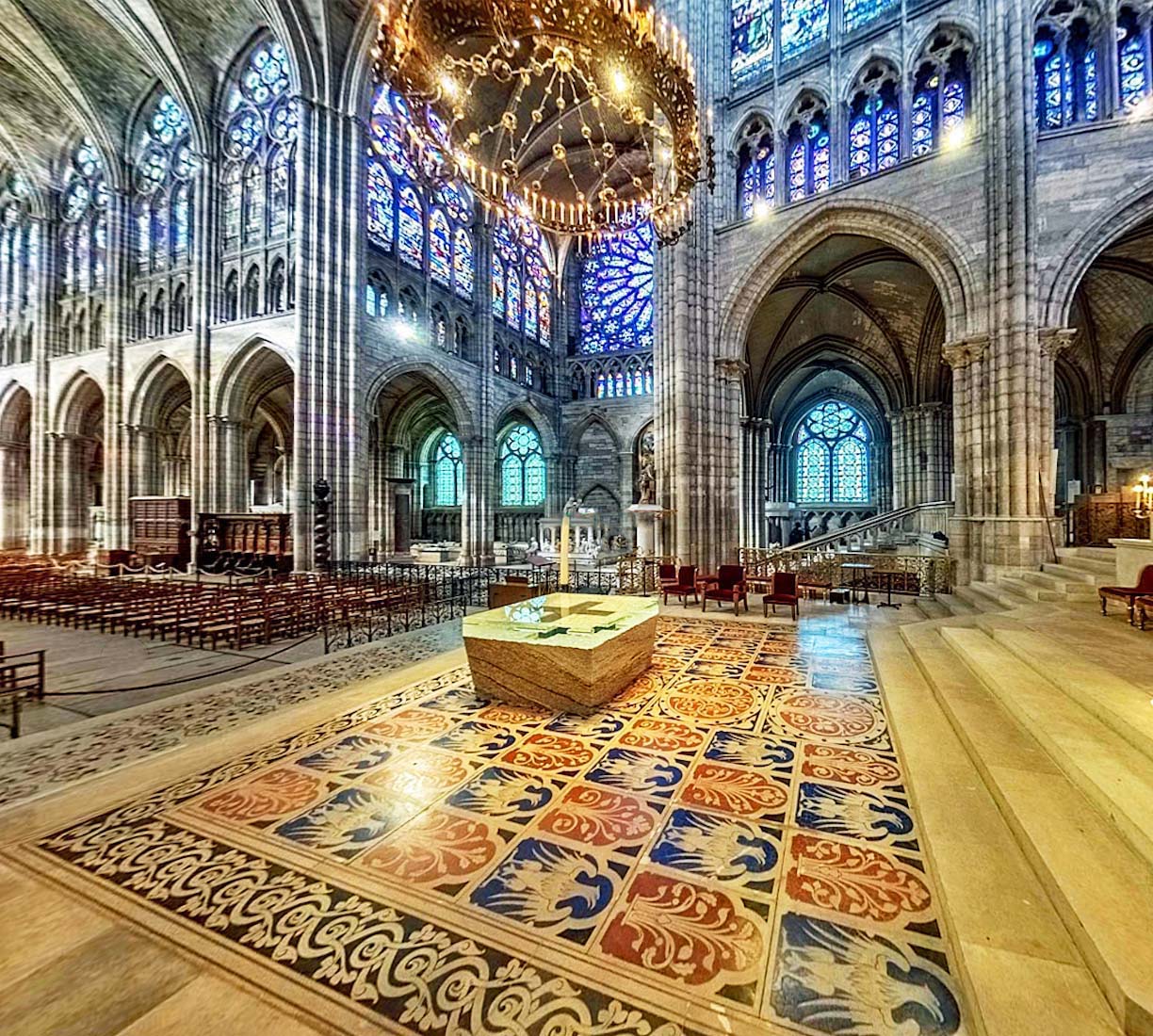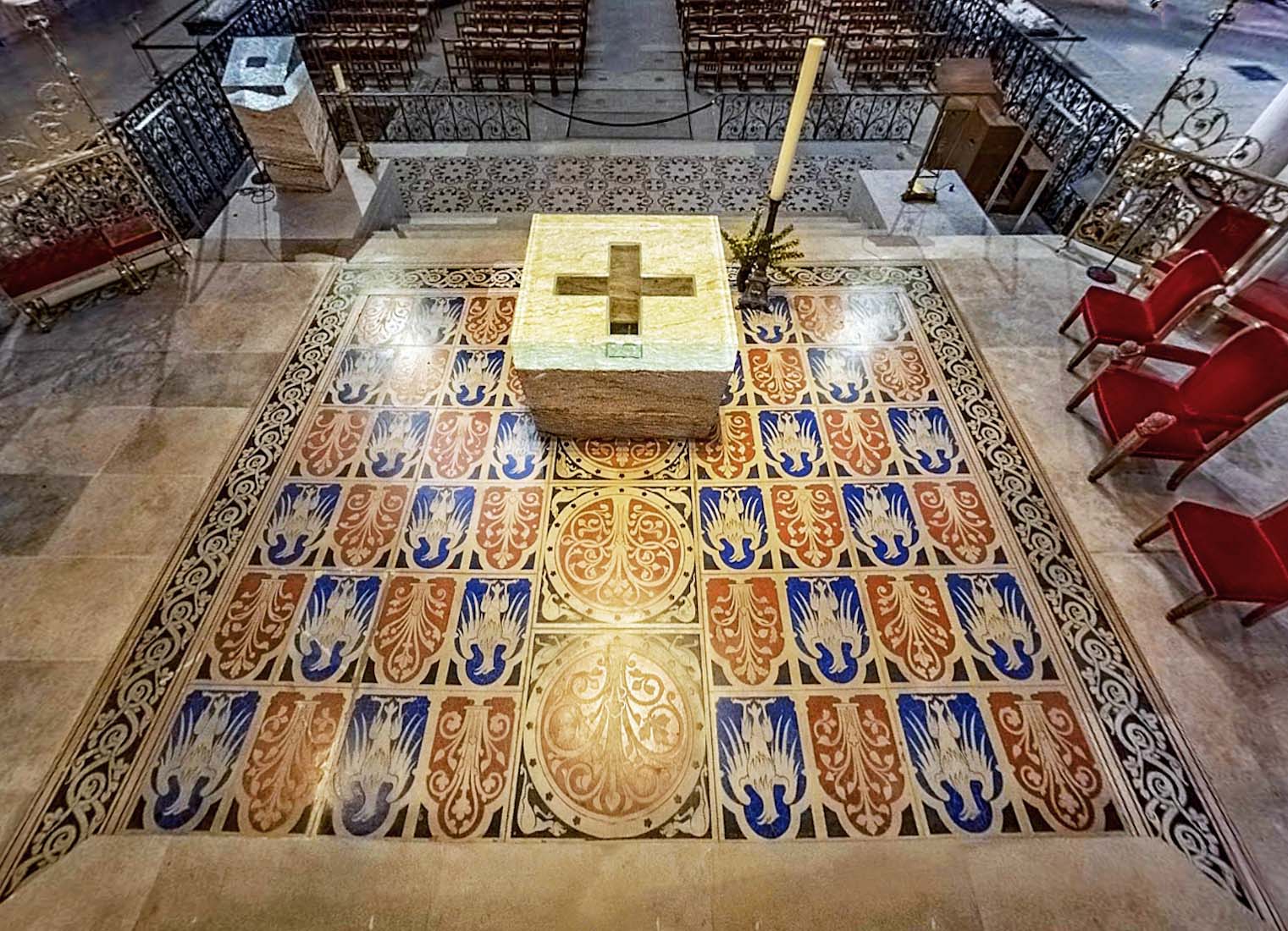42. DUKES OF ORLEANS RH
There is one other large monument in the extended transept, a little further West. In 1502, when Louis XII returned from his victorious campaign in Italy, he ordered a Genoese artist to create a monument in memory of Valentine Visconti, his grandmother. This funerary artwork had been the link between medieval recumbent effigies and the new representation of the ancient Italian tombs of the Renaissance era. It recalls the family origins of Louis XII and shows the infatuation of that era for Italy. It highlights notable developments of funerary art: the eyes are closed and the lying effigies begin to look similar to their original models. The cadaver tombs realistically represent the agony of the dead while the praying figures situated at the base are the heavenly representation of the dead awaiting resurrection. INDEX
43. UP THE STAIRS SD
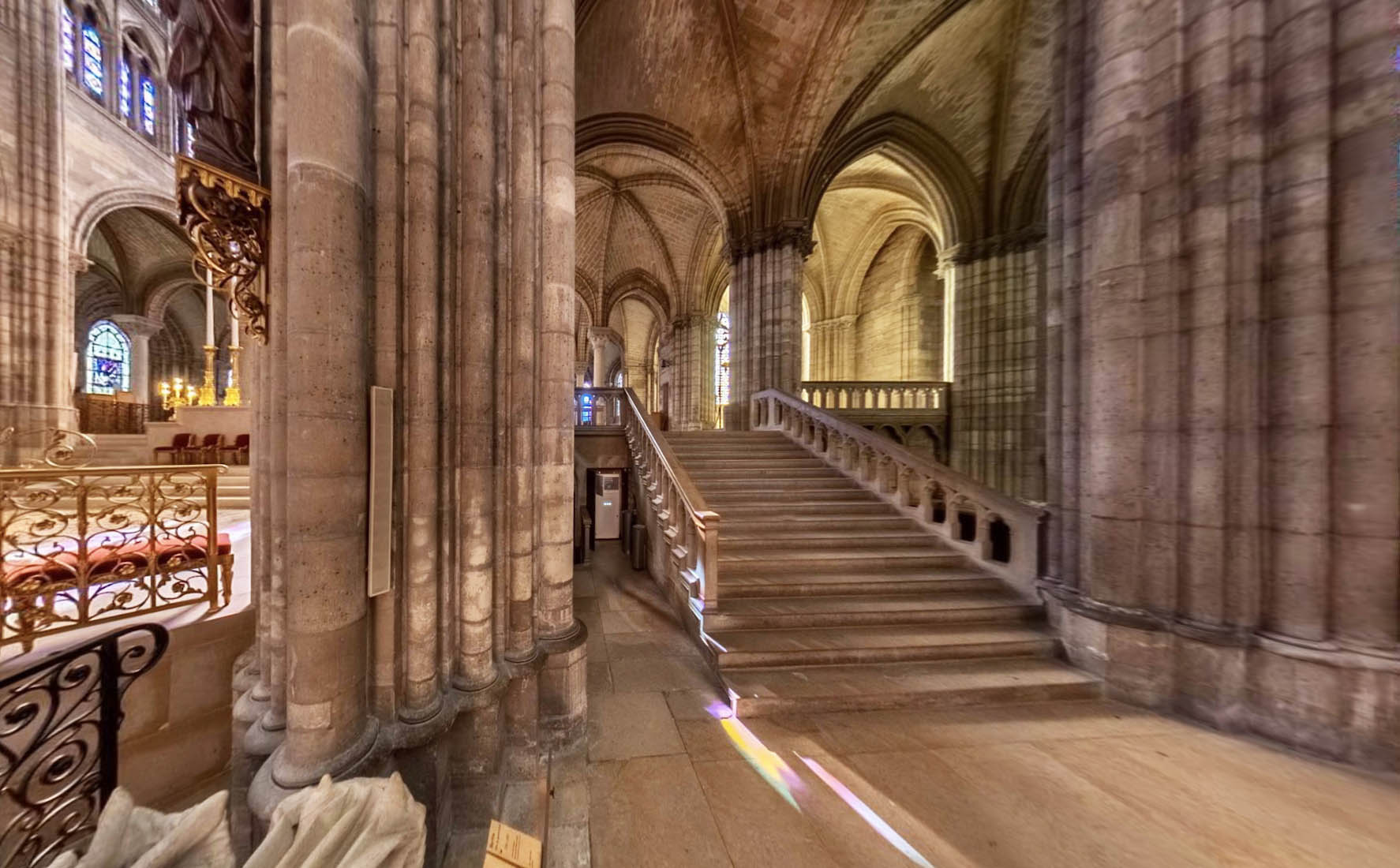
We leave the South transept, and approach a grand staircase leading upwards to the raised sanctuary area. However, there are a couple of other options. A walkway behind the pillar at extreme right would lead us to a further chapel at our present level. There is also a doorway to the left of the staircase. This leads us down to the crypt, which is where we go now.
44. DESCENT TO THE CRYPT RH
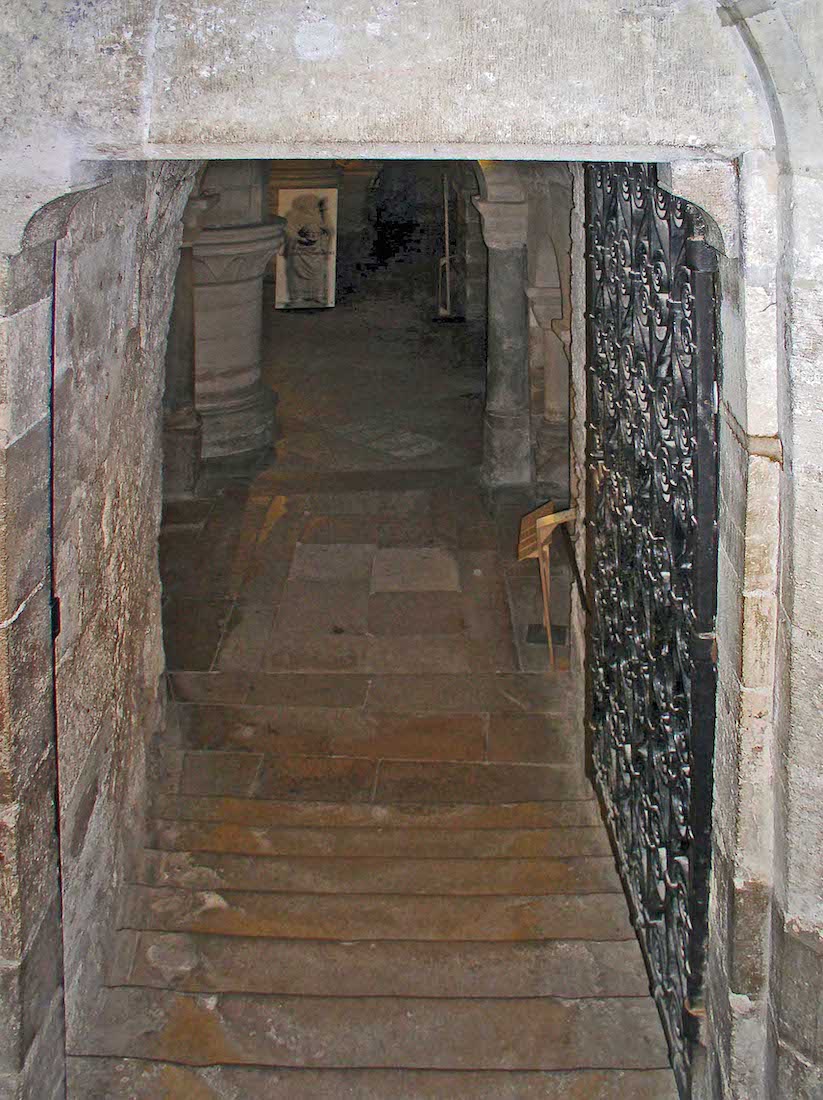
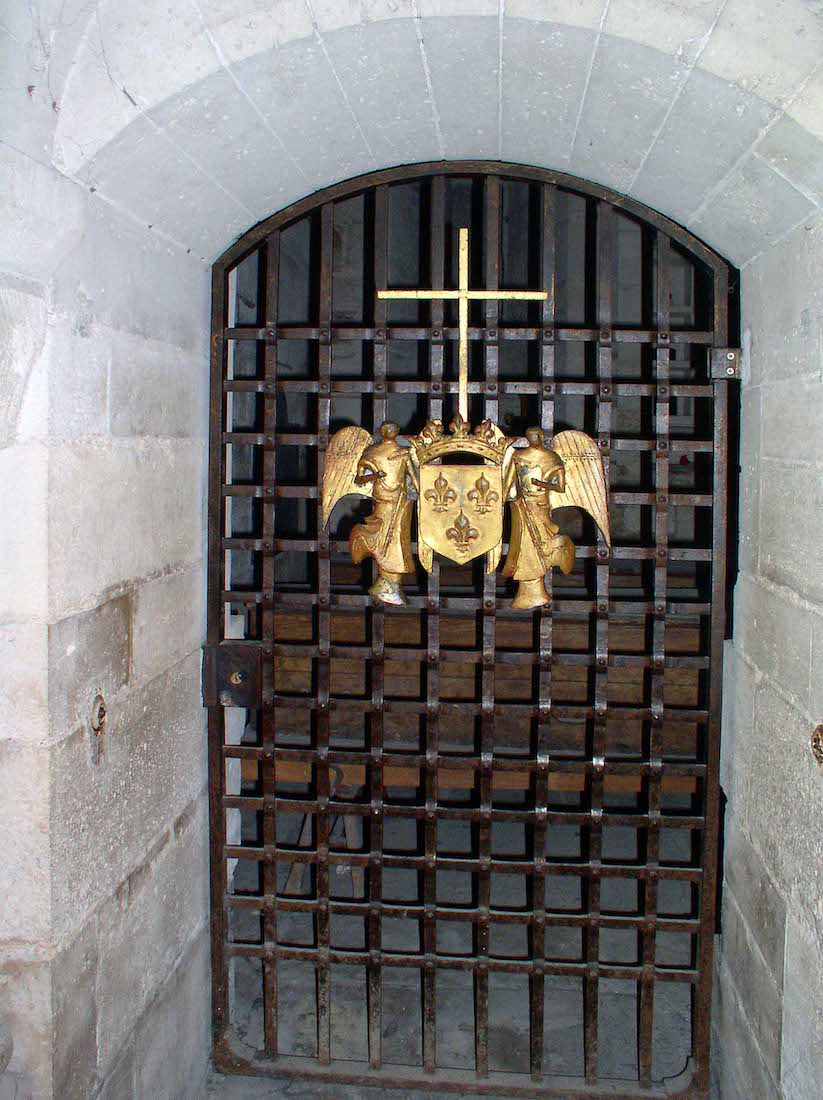
We descend to the crypt. Immediately on our right is a closed barred gate bearing a golden coat of arms. The passage leads to the Vault of the Princes. This vault was created to accommodate members of the French royal family who either died after the restoration of the monarchy in the early 19th century, or who had died in exile after 1793. It also contains fragments of body parts belonging to kings who died prior to 1793 and whose bodies were thrown into mass-graves full of quicklime in October 1793.
46. TO THE BOURBON GALLERY SD RH
However, the situation quickly improves as we come to an arched gate on our right leading to the Bourbon Gallery. The gateway has a crest on either side, and a crucifix above. The gallery is well lit, and we soon pass on our left a monument to Louis XVII, King of France and of the Navarre. The Navarre is a small country / province in the Pyrenees, on the border between Spain and France, being the subject of some historical disputes of ownership. The glass container is said to contain the heart of Louis XVII.
47. BOURBON WINDOW AND BUST W-H RH
The passage shortly leads to a T-junction. Turning left we have before us this colourful window featuring the coat of arms of the French Royal House of Bourbon. A large bust of Louis XVIII stands on the sill of the Bourbon window. Louis (1755 – 1824) was King of France from 1814 to 1824. [Left Photo Credit: Wikimedia-Hagiograph]
48. BOURBON FAMILY RH RH
There is a monument mounted on the wall on either side of the Bourbon window. • At left is the tomb of Maria Theresa of Spain (1638 – 1683), who was by birth Infanta (Princess) of Spain and Portugal (until 1640) and Archduchess of Austria as member of the Spanish branch of the House of Habsburg and by marriage Queen of France and Navarre. Her marriage in 1660 to King Louis XIV, her double first cousin, was made with the purpose of ending the lengthy war between France and Spain. • To the right is the cenotaph of Henry IV (1553 – 1610), also known by the epithet Good King Henry or Henry the Great. He was King of Navarre (as Henry III) from 1572 and King of France from 1589 to 1610. He was the first monarch of France from the House of Bourbon, a cadet branch of the Capetian dynasty. He was assassinated in 1610 and was succeeded by his son Louis XIII.
49. BOURBON MONUMENTS RH BB
Next to the Henri IV monument is this tomb of of Charles de Valois-Angouleme, Duc d’Angouleme. At centre is a relief portrait of Marie Adelaide de France, 1732-1800, aunt of Charles X. At the West end of the ‘T’ is a monument to the Duc d’Orleans.
50. BOURBON MONUMENT RH
Following around final corner of the ‘T’ we come to the large monument shown at right. This commemorates Gaston of Orleans (1608 – 1660), Philip of Orleans (1674 – 1723), Louis XIV (1638 – 1715) and Marie De’Medici (1573 – 1642).
51. CRYPT CHAPEL SD
Leaving the Bourbon Gallery we return to the main entry passage and turn right to where there is a semicircle of small chapels. This is the central chapel, and the most elaborate of these little chapels, with a special altar and floor tiling. Notice the carved capitals at the top of the columns. Most of the chapels are empty, and sometimes used for display purposes. On the day of our visit it is rather cold down here in the crypt: it is probably always like this!
52. CRYPT CHAPEL WINDOW W-V
The windos of the little chapels are not all the same, but this one gives us the general idea: abstract with a floral theme. [Photo Credit: Wikimedia - Guilhem Vellut]
53. CENTRAL CRYPT RH
From our position in front of the central chapel, we can turn around and view the central display of six black tombs. Beyond is an untidy area below the transepts – a sort of general store!
54. CRYPT CAPITALS RH RH RH RH
The carved capitals on top of some of the columns are beautifully elaborate and decorative. Here is a selection.
55. CENTRAL TOMBS RH
This is a view of the central tombs in the other direction, looking towards the central chapel. We identify the tombs in a clockwise direction from bottom left: Tomb for Charles X (1757 – 1836): in fact Charles died and was buried in Slovenia; • Marie Antoinette (died 1793); • Louis de Lorraine (died 1601); • Louis VII (1137 – 1180); • Louis XVI (1774 – 1793); • Louis XVIII (1814 – 1824).
56. CRYPT LOOKING WEST RH
Turning around and looking West, we find this large collection of old sarcophagi stretching back under the transepts. Just North of here is the royal ossuary which contains bones exhumed from the royal tombs at the time of the Revolution, and gathered together by Louis XVIII. We now leave the crypt and return back up to the Southern staircase.
57. JOHN THE BAPTIST CHAPEL SD RH
From the staircase we look down on the Chapel of St John the Baptist. There are various tombs and recumbent effigies here, including this knight with his sword and shield. This is Louis of Sancerre (1342 – 1402), the constable of France from 1397 to 1402. Louis of Sancerre fought by the side of Bertrand du Guesclin. They are part of the dozen servants of the kingdom who had the honour to be buried at the Basilica Saint-Denis. The effigy, ordered by Charles VI, offers a tough visage and a well-known distinctive squint that made Louis recognizable by his contemporaries.
58. ROYALTY IN PRAYER SD
At the top of the staircase we turn right into the St Louis Chapel. Here we find King Louis XVI and Marie Antoinette in prayer. The chapel is large with an abstract stained glass window, a banner, and an altar with a carved reredos.
59. LOUIS XVI AND MARIE ANTOINETTE RH RH
Louis XVI (1754–1793) was the last king of France (1774–92) in the line of Bourbon monarchs preceding the French Revolution of 1789. The monarchy was abolished in 1792; later Louis and his queen consort, Marie-Antoinette, were guillotined on charges of counterrevolution. The chapel altar has a detailed screen with six scenes framed with Gothic arches. I do not know what is being portrayed here.
60. KING DAGOBERT TOMB RH RH
Leaving the St Louis Chapel we come back to the nave altar. Standing here is the elaborately carved tomb of King Dagobert. Dagobert was king of France from 629 to 639, in the Merovingian dynasty. He is the first king buried in the Basilica in 639 and is considered to be the abbey’s founder. The monks paid him homage in the XIIIth century by fashioning a tomb of remarkable dimensions now in its original position in the sanctuary. His funerary statue, lying on its left side, looks towards the location of the early tomb of St Denis. Three carvings on the tomb tell the story of the vision of the hermit John. The king’s soul, depicted as a naked child wearing a crown, is carried off to Hell on account of his regrettable practice of disposing of the property of certain churches. But in the upper panel, St Denis, St Martin and St Maurice seize the soul from the hands of the demons and take it off to Heaven where it is granted entry to Paradise. This vision expresses Saint Denis’ and the abbey’s role as protector of the Capetian monarchy.
61. CHANDELIER RH
This large chandelier hangs above the nave altar, just East of the crossing. It has an interesting inner configuration of planets and moons.


